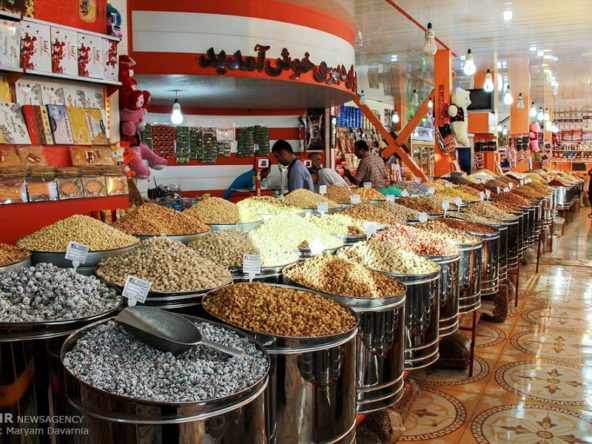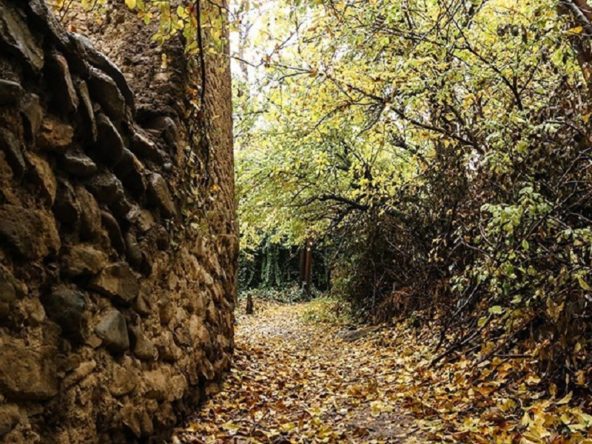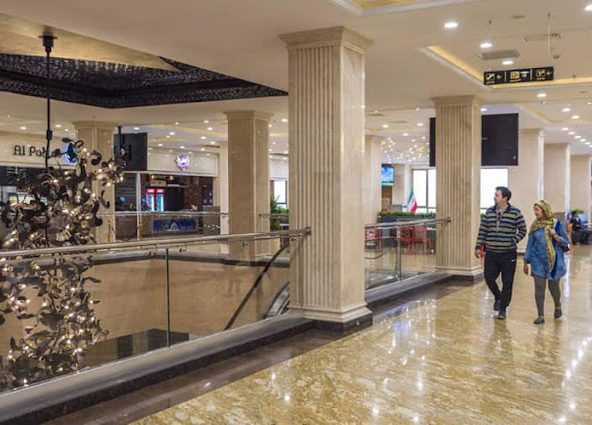Many of us love traveling on the Wanderlog team, so naturally we’re always on the hunt find the most popular spots anytime we travel somewhere new. With favorites like Treasury of National Jewels, Golestan Palace, and Glassware and Ceramic Museum of Iran and more, get ready to experience the best places in Tehran.
| Name | Location |
| Treasury of National Jewels | Center of Tehran |
| Golestan Palace | Center of Tehran |
| Glassware and Ceramic Museum of Iran | Center of Tehran |
| Tehran Museum of Contemporary Art | Center of Tehran |
| Reza Abbasi Museum | East of Tehran |
| National Museum of Iran | Center of Tehran |
| Carpet Museum of Iran | Center of Tehran |
| Saadabad Historical Complex | North of Tehran |
| Museum of Time | North of Tehran |
| Moghadam Museum | Center of Tehran |
| Niavaran Palace Complex | North of Tehran |
| Iranian Artists Forum | Center of Tehran |
| Cinema Museum of Iran | North of Tehran |
| Omidvar Brothers’ Museum | North of Tehran |
| Islamic Revolution & Holy Defense Museum | East of Tehran |
| Museum of the Qasr Prison | East of Tehran |
| Negarestan Museum Garden | East of Tehran |
| Masoudieh Palace | East of Tehran |
| Iranian Art Museum Garden | North of Tehran |
| Museum of Music | North of Tehran |
| Jahan Nama Museum | North of Tehran |
| Tehran Peace Museum | Center of Tehran |
| Niavaran Cultural Center | North of Tehran |
| Haftchenar’s Museum of Wildlife and Natural Monuments | Center of Tehran |
| Shirin Art Gallery | East of Tehran |
| Seyhoun Art Gallery | Center of Tehran |
| Mohsen Gallery | North of Tehran |
| Assar Art Gallery | Center of Tehran |
| Dastan’s Basement | North of Tehran |
| O Gallery | East of Tehran |
Treasury of National Jewels
Museum of national treasures, including opulent, ornate gem-encrusted objects & furniture.
A surfeit of unusual yet globally-famous treasures and jewels rest in the immensely-protected Treasury of National Jewels inside Central Bank of Iran, Tehran; this is a pure cultural gym at the heart of Tehran. The gem-encrusted items and jewel-studded exotic regalia of past Iranian Shah and Queens are just some of the mind-blowing objects you will find at the stands in this museum, which, by the way, is more like an enormous well-lit underground safe box, or a vault if you prefer. These items reflect the sad, the happy, the enraging, and proud moments of Iran’s up-and-down past and memoirs of how powerful or weak kings and dynasties altered the course of this land’s history.
Owned by the Central Bank of Iran, the Treasury of National Jewels also known as the National Jewelry Museum of Iran was reopened for a public visit in 1992 and is located in Central Bank’s main building in Ferdowsi Street of Tehran. Since the Treasury of National Jewels is one of the most precious jewel museums of the world, this museum is like a big underground safe box with many safety guards and a limited visiting schedule which is from Saturday to Tuesday from 14:00 to 16:30. This awe-inspiring collection includes pieces of jewelry like diamonds, pearls, emeralds, rubies, etc.
The underground vault of the Central Bank of Iran shelters an opulent array of priceless gems, crowns, and other jewels worn by the monarchs of the Safavid, Qajar, and Pahlavi dynasties. Must-sees in the dizzying collection include the Peacock Throne (a gem-studded daybed) and the 182-carat uncut pink diamond Darya-ye-Nur (Sea of Light). Limited openings and tight security mean you should plan your visit in advance, leave all of your belongings at reception, and keep your hands to yourself, lest you sound the piercing alarms.
It is one of the most popular destinations in Tehran, considering the fact that some invaluable pieces are kept here, such as the pink colored diamond of Darya-ye-Noor (182 Carats) and the Peacock Throne or Takht E Tavous, with 26,733 pieces of jewels attached to it. The museum is located in the basement of Central Bank of the Islamic Republic of Iran and therefore, the working hours are very limited.
Tucked under the Central Bank of Iran, the museum displays an exceptional array of priceless jewels, crowns and impressive gems, all worn by the Safavid, Pahlavi and Qajar monarchs and dynasties. Look out for the dazzling gem-studded Peacock Throne. Just keep your hands in your pocket at all times, as touching any part of the glass in the museum rings the piercing alarms.
By visiting this museum, you’ll get a lot of information about Iran’s history. In other words, visitors will know about the country’s victories, failures, pride, and shocking incidents. The general opulent objects of the museum are gem-studded crowns, swords, and thrones like Takht-e Naderi and Takht-e Tavoos (Peacock Throne, a gem-studded daybed).
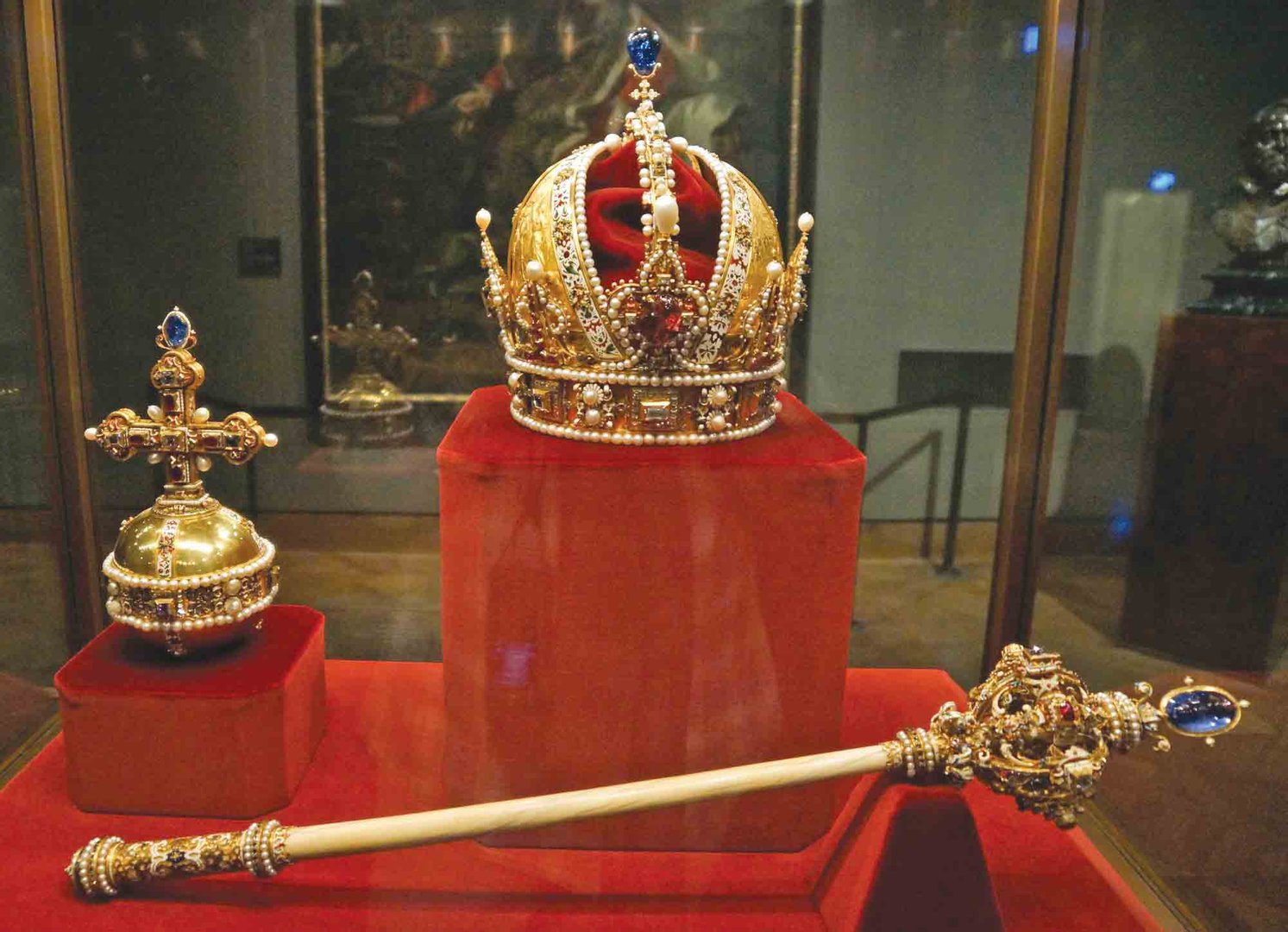
Location: Tehran Province, Tehran, Javadiyeh, 213 Avenue Central Bank of، Ferdowsi, Iran
Working Days:
Sunday: 2–5PM
Monday: 2–5PM
Tuesday: 2–5PM
Wednesday: Closed
Thursday: Closed
Friday: Closed
Saturday: 2–5PM
Phone: +98 21 6446 4700
Website: https://www.cbi.ir/page/1475.aspx
Golestan Palace
Ornate royal palace & museum with highlights like marble thrones and treasures of Qajar kings.
Topping the list of the best museums is none other than Golestan Palace, the UNESCO-listed site that once served as the Qajar dynasty’s seat of government. The royal buildings require separate entrance tickets, though it’s worth seeing the lavish palace in its entirety. Not to be missed are the Takht-e Marmar (Marble Throne) sitting in an open, mirrored hall, the cozy Karim Khan Nook, and the striking Shams-ol Emareh, whose clock was presented to Nasser al-Din Shah by Queen Victoria.
If you’d like to walk in a relaxing, pleasant area in Tehran, also learn a lot about Iran’s history, Golestan Palace is the best option. The palace is a masterpiece of the architecture dates back to the Qajar era in the 19th century. It presents a combination of European and Iranian styles, which started to apply on buildings in the 19th century.
The UNESCO-listed museum is one of the top sights in the whole of Iran. The Golestan Palace was the Qajar dynasty’s seat of government. It’s a huge complex filled with many buildings of which the royals buildings need a separate ticket to enter.
Golestan Palace Complex is the only UNESCO Heritage Site in the heart of Tehran. It sits in a region initially called Tehran Arg that was the city’s gateway in the Qajar period. The palace was established during the Safavid era.
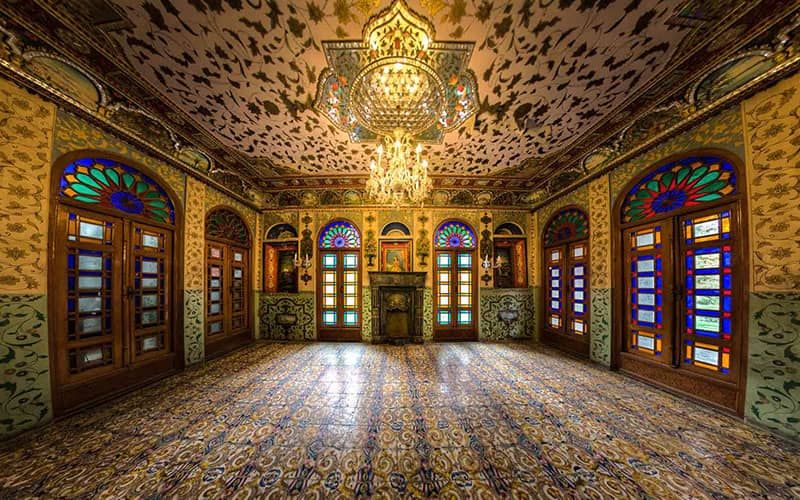
Location: Tehran District 12 Panzdah-e-Khordad St Fifth Khordad Avenue Arg Sqr،, Iran
Working Days:
Sunday: 9:30AM–6:30PM
Monday: 9:30AM–6:30PM
Tuesday: 9:30AM–6:30PM
Wednesday: 9:30AM–6:30PM
Thursday: 9:30AM–6:30PM
Friday: 9:30AM–6:30PM
Saturday: 9:30AM–6:30PM
Phone: +98 21 3311 3335
Website: http://www.golestanpalace.ir/
Glassware and Ceramic Museum of Iran
Collection of ancient bowls, pitchers & other vessels showcased in a posh, old-fashioned mansion.
Being established in a gorgeous building named “Qavam Complex” which was the residential house of Mr. Ahmad Ghavam, the prime minister of Iran during the Qajar Era, the Glassware and Ceramic Museum of Iran or simply the “Abgineh Museum” is another amazing museum of Tehran, which is situated in 30 Tir Street. With its smart interior design, this two-story building is home to a precious collection of Iranian ceramics and glassware from ancient civilizations like Parthians to Seljuk ceramics with calligraphy designs and more practical objects from the Safavid Dynasty.
The truth of the matter is that the only sightworthy objects of Tehran’s Glassware and Ceramic Museum, or publicly known as Abgineh Museum, aren’t confined inside the main building’s walls and chambers, and there is more to this marvel other than its thousands-of-years magnificent ceramic and glassblowing items. also check out: Capital of Iran guide. Glassware and Ceramic Museum.
This museum is home to an amazing collection of glassware and ceramics, belonging to different eras in the history of Iran. Not only the collection is worth a visit, the building itself and the surrounding areas located in 30-Tir, one of the oldest streets of Tehran, can be considered as a tourist attraction as well!
The museum building is in Tehran and used to be a private residence for Qavam-Ol-Saltaneh (Mr. Ahmad Qavam) in 1922. Later, it turned into the Egyptian embassy. In 1980, the building became a museum and was also selected as a national heritage.
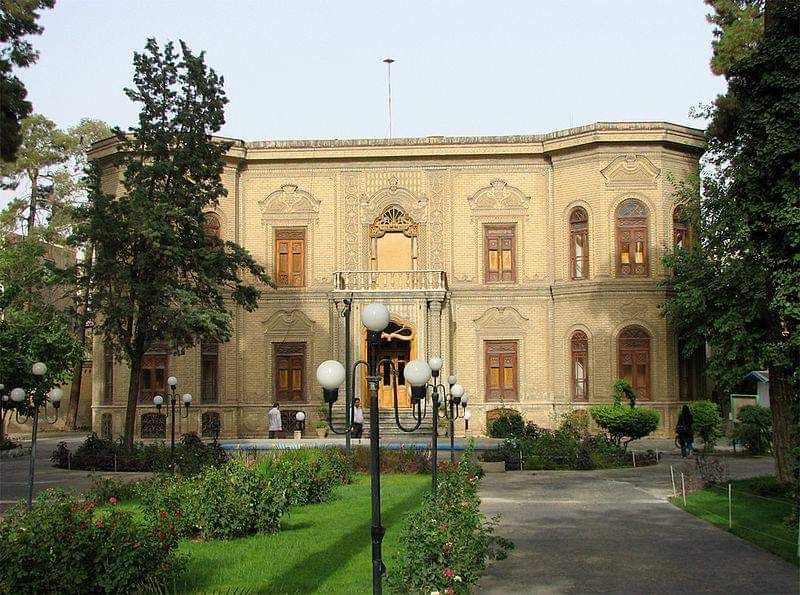
Location: Tehran Province, Tehran, District 12, 30th Tir St, Iran
Working Days:
Sunday: 8AM–4:30PM
Monday: 8AM–4:30PM
Tuesday: 8AM–4:30PM
Wednesday: 8AM–4:30PM
Thursday: 8AM–4:30PM
Friday: 8AM–4:30PM
Saturday: 8AM–4:30PM
Phone: +982166708153
Tehran Museum of Contemporary Art
Modernist subterranean museum with an important collection of modern & contemporary artwork.
If you want to see the best of the modern-age museums in Tehran and immerse in newer perspectives of life and enjoy the talent of avant-garde and forward-thinking Persian and western artists, then you should make time out of your busy schedule of hunting through the capital of Iran and make a visit to its Museum of Contemporary Art. Yet another example of Iran’s late queen effort to cultivate the cultural aspects of the Persian lifestyle, this museum in Tehran stands today to showcase the best artistic works of numerous masterminds, one of them being the statue of the Queen herself which didn’t make it through the 1979 Islamic revolution. Also check out: Espinas palace hotel.
This large art museum which is located on the other side of Laleh Park of Tehran in Kargar Street is one of the best museums in Iran which attracts many art lovers. This modern building, which resembles Baadgirs (wind catcher towers) of Yazdand is a sample of contemporary art itself, was designed by Mr. Kamran Diba the great Iranian modern architect and built-in 1977. Apart from art masterpieces from Iranian artists, the selection of Tehran Museum of Contemporary Art which was collected by Farah Pahlavi includes masterpieces from great artists like Pablo Picasso, Paul Gauguin, Auguste Renoir, Rene Magritte, Jackson Pollock, etc.
Although the city is not included as the first choice on travelers’ itinerary, Tehran can actually be an attractive tourist destination. Apart from its annoying traffic and crowded streets, there are some peaceful spots like museums in Tehran where you can forget about all the chaos in the city and simply enjoy the silence and calm atmosphere there. Let’s explore some of Tehran’s best museums to see how they can entertain you in a city like Tehran and impact your viewpoint about Iran at the same time.
TMoCA contains one of the most valuable collections of Western art outside Europe and North America. These paintings and sculptures, accumulated largely before the Revolution of 1979, feature the likes of Monet, Pollack, and Rothko, alongside a selection of contemporary Iranian artists such as Sohrab Sepehri and Parviz Tanavoli. Sculptures by Giacometti and Magritte are in the surrounding garden grounds.
The largest art museums in Tehran lies among a lush park called Laleh Park. It contains more than 3,000 priceless items of European and American paintings from the 19th and 20th century. An eye-opening collection of Iranian modern and contemporary art also exists, which conclude sculptures too.
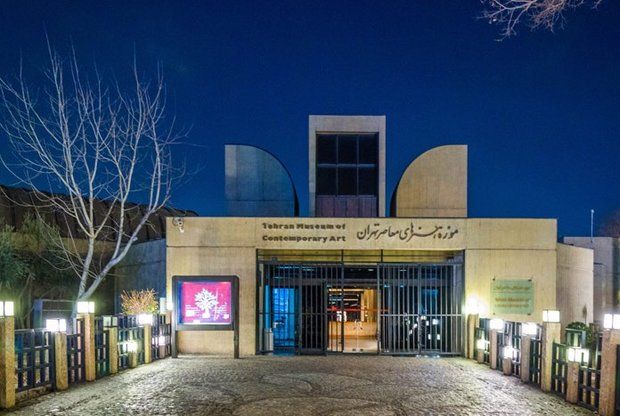
Location: P96R+G65, Tehran, Tehran Province, Iran
Working Days:
Sunday: 10AM–5PM
Monday: Closed
Tuesday: 10AM–5PM
Wednesday: 10AM–5PM
Thursday: 10AM–5PM
Friday: 10AM–5PM
Saturday: 10AM–5PM
Phone: +98 21 8898 9374
Website: https://instagram.com/tehran.moca
Reza Abbasi Museum
Museum with a collection of traditional Iranian art dating from 2000 BCE to the early 1900s CE.
Reza Abbasi Museum is located in Shariati Street of Tehran and is one of the richest cultural-historical collections of Iran, which is named after Reza Abbasi the famous painter of the Safavid Dynasty. This museum is a three-story building and each floor is assigned to a specific collection: The third floor is the hall of ancient Iran where objects from Achaemenid, Parthian and Sassanid empires and prehistoric civilizations are kept and show the knowledge of Iranians in using different materials. The second floor is the hall of Islamic art where metal, pottery, and textile masterpieces from Seljuk, Timurid, Safavid, and Qajar dynasties are shown.
Reza Abbasi Museum has a well-curated collection of Pre-Islamic and Islamic art|© reibai / WikiCommons. Named after the great Iranian artist of the Safavid era, the Reza Abbasi Museum comprises three galleries that highlight pre-Islamic and Islamic art and calligraphy and painting, all arranged chronologically. Paintings and miniatures by Abbasi himself are on display alongside pottery, vessels, and metal objects and jewelry from ancient times, which make for some of the most exciting items in this well-kept museum.
It’s named to honor the skilled Iranian artist of the Safavid time, Reza Abbasi. The museum has become under the supervision of the Iranian Cultural Heritage Organization since 2000. Reza Abbasi Museum includes three galleries depicts pre-Islamic and Islamic art.
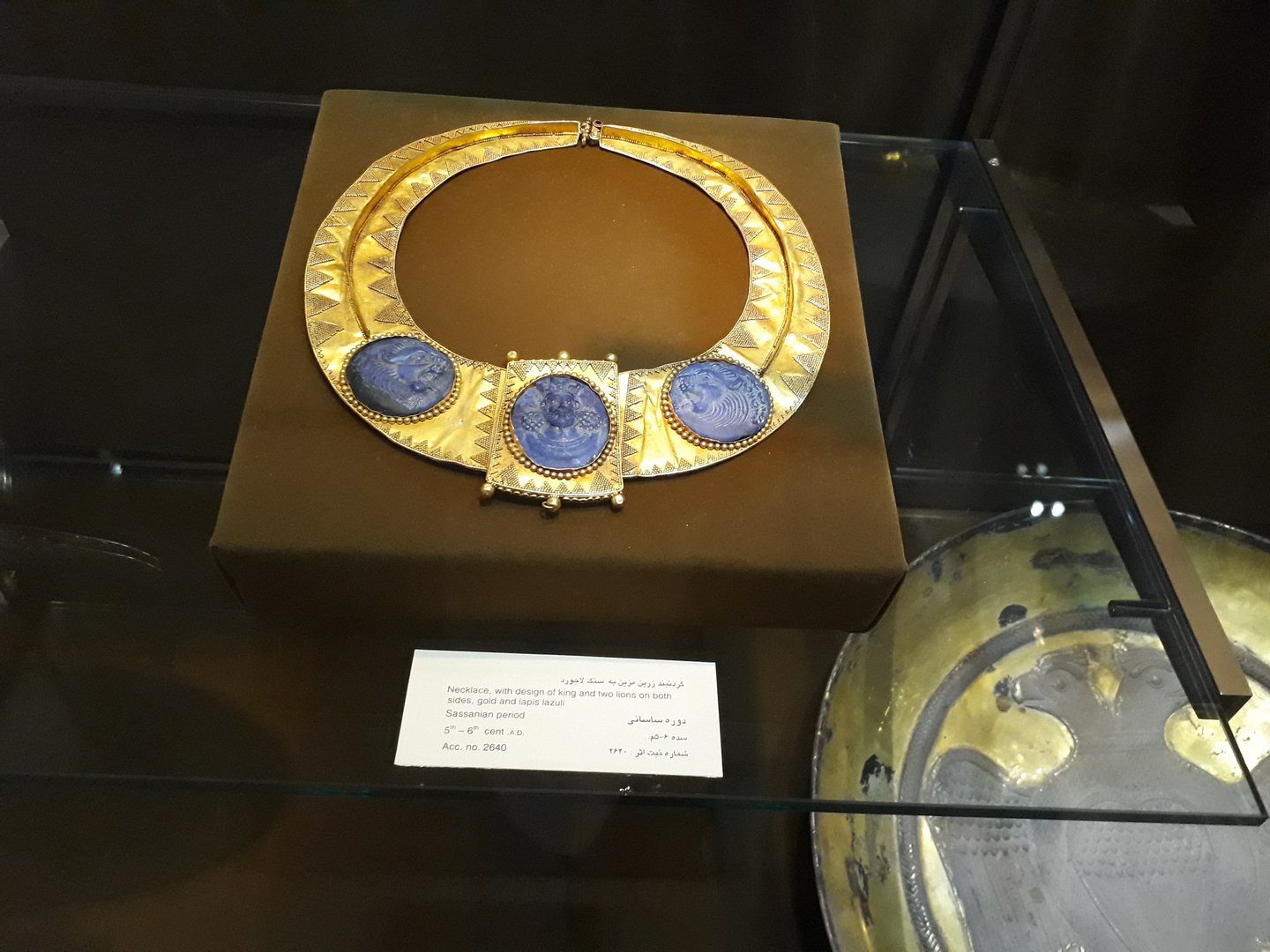
Location: Tehran Province, Tehran, District 7, Shariati St, Iran
Working Days:
Sunday: 9AM–6PM
Monday: Closed
Tuesday: 9AM–6PM
Wednesday: 9AM–6PM
Thursday: 9AM–6PM
Friday: 9AM–6PM
Saturday: 9AM–6PM
Phone: +98 21 8851 3002
Website: https://instagram.com/rezaabbasi.museum?igshid=tz3rh6kqn2d2
National Museum of Iran
Handsome, stately art deco–style museum with historic ceramics, pottery, stone figures & carvings.
This museum is the most important archeology museum of Iran, located in 30 Tir Street, in Tehran and consists of two buildings, including the Museum of Ancient Iran which was designed by the French architecture Mr. Andre Godard in 1937 inspired by the Sassanid vault (Taq-e Kasra) and the Museum of Islamic Archeology and Art of Iran which was opened in 1972. The Museum of Ancient Iran is the exhibition of ancient objects from the Lower Paleolithic era made by the Neanderthals and first civilizations of Iran, to glorious objects from pre-Islamic empires ruling Iran, like golden objects and hand-carved bass reliefs of Persepolis, the great statue of the Parthian Noble Man, and objects from Sassanid Era. National Museum of Iran is usually visited on the first day of Iran travel itinerary and it is where travelers and visitors can learn about the history of Iran at the beginning of their trip to Iran.
National Museum of Iran is the perfect option if you want to gain a complete overview of the rich heritage of Iran. Comprised of 2 complexes demonstrating ancient Iran and the Islamic era, the National Museum provides you with a great outlook on different aspects of the country’s history. It is located near Golestan Palace and Grand Bazaar of Tehran and thus can be visited while you are exploring these famous attractions of the city.
In fact, it’s an institution consists of two complexes: the Museum of Ancient Iran (opened in 1937) and the Museum of the Islamic Era( opened in 1972). There are also research departments are arranged chronologically. The institution indicates historical objects of the ancient and medieval era in Iran, including vessels, metal works, fabric, some rare books, and coins.
The National Museum of Iran is made up of the Museum of Ancient Iran and the Museum of Islamic Archaeology and Art of Iran. Head inside to find artefacts dating from the ancient and the medieval times such as textile remains, pottery items and coins. Don’t miss the 9,000 year-old animal and human figurines.
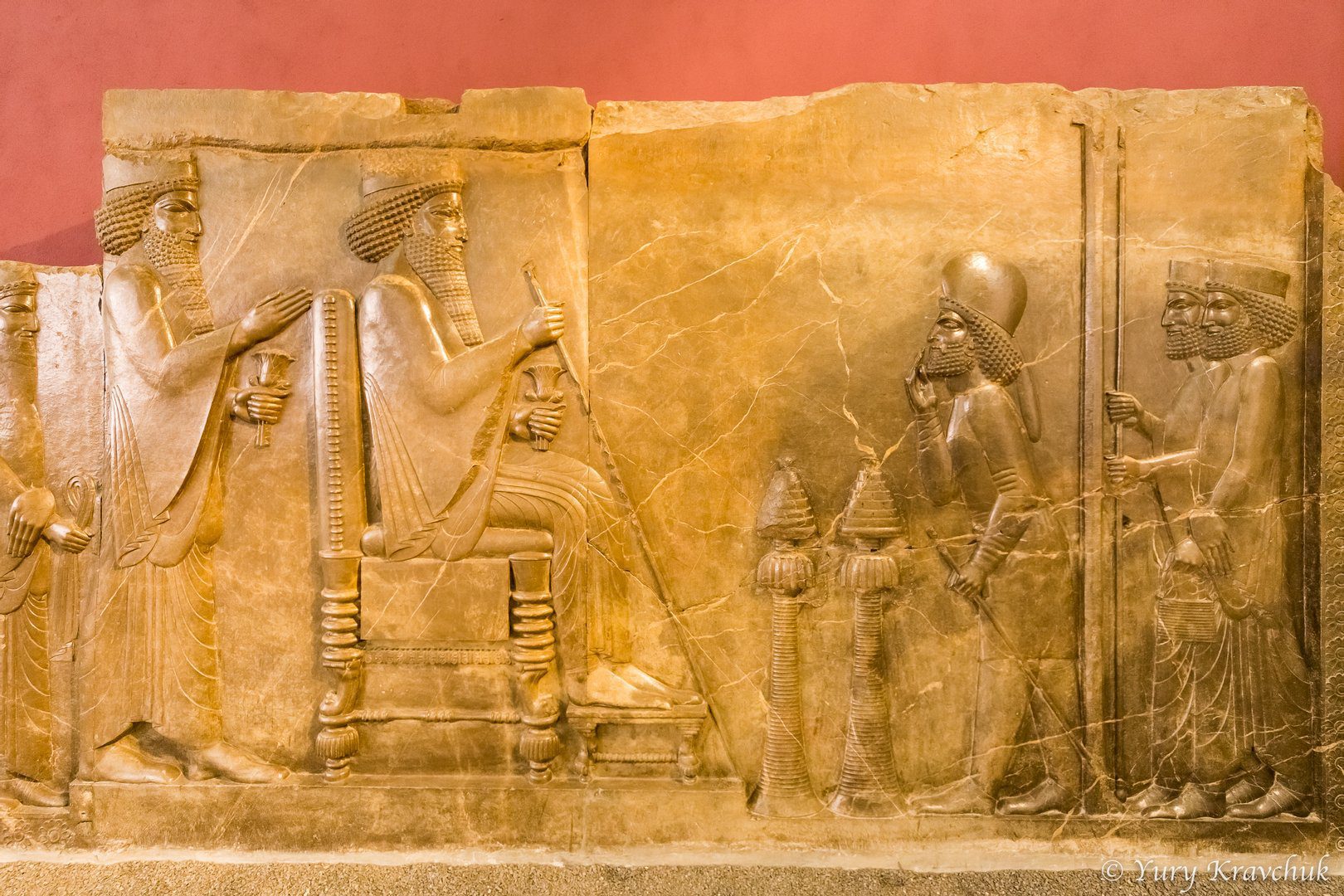
Location: No.1, Henri Rolin St., Siy-e Tir St., Emam Khomeini Ave, Tehran
Working Days:
Sunday: 9AM–7PM
Monday: 9AM–7PM
Tuesday: 9AM–7PM
Wednesday: 9AM–7PM
Thursday: 9AM–7PM
Friday: 9AM–7PM
Saturday: 9AM–7PM
Phone: +98 21 66702061-6
Website: https://irannationalmuseum.ir/en/
Carpet Museum of Iran
Museum displaying its collection of Iranian-made rugs dating back to the 16th century.
The Persian carpet is a world known for its antiquity, high quality, and eye-catching designs reminding the Garden of Eden. Almost everyone who travels to Iran is interested in Persian carpets and likes to learn more about this wonderful art and where is a better place for learning about Iranian carpet than a large carpet museum. The Carpet Museum of Iran located on the northern side of Laleh Park in Tehran is home to a great collection of handmade nomadic carpets, rural woven carpets, and city style carpets from different carpet weaving centers of Iran dating from the 16th century to the present.
As carpets are a wonderful manifestation of Iranian art and culture, visiting this museum can give rise to a sense of appreciation for thousands of years of delicate works done by Iranian artists. The variety in colors, patterns and forms in carpets which are gathered from all over the country, is really unbelievable and can be a joyful experience if you are fond of art.
Found next to Laleh Park, the Carpet Museum of Iran is a highlight to any visit in the capital. Marvel at glorious Persian carpets (what else?) from the 16th century to the present day. There is a giant library to have a look at too, which is home to roughly 7,000 books.
Exquisite and historical Persian rugs can’t only be found in houses of wealthy western families and multi-storied museums of any other country than Iran.
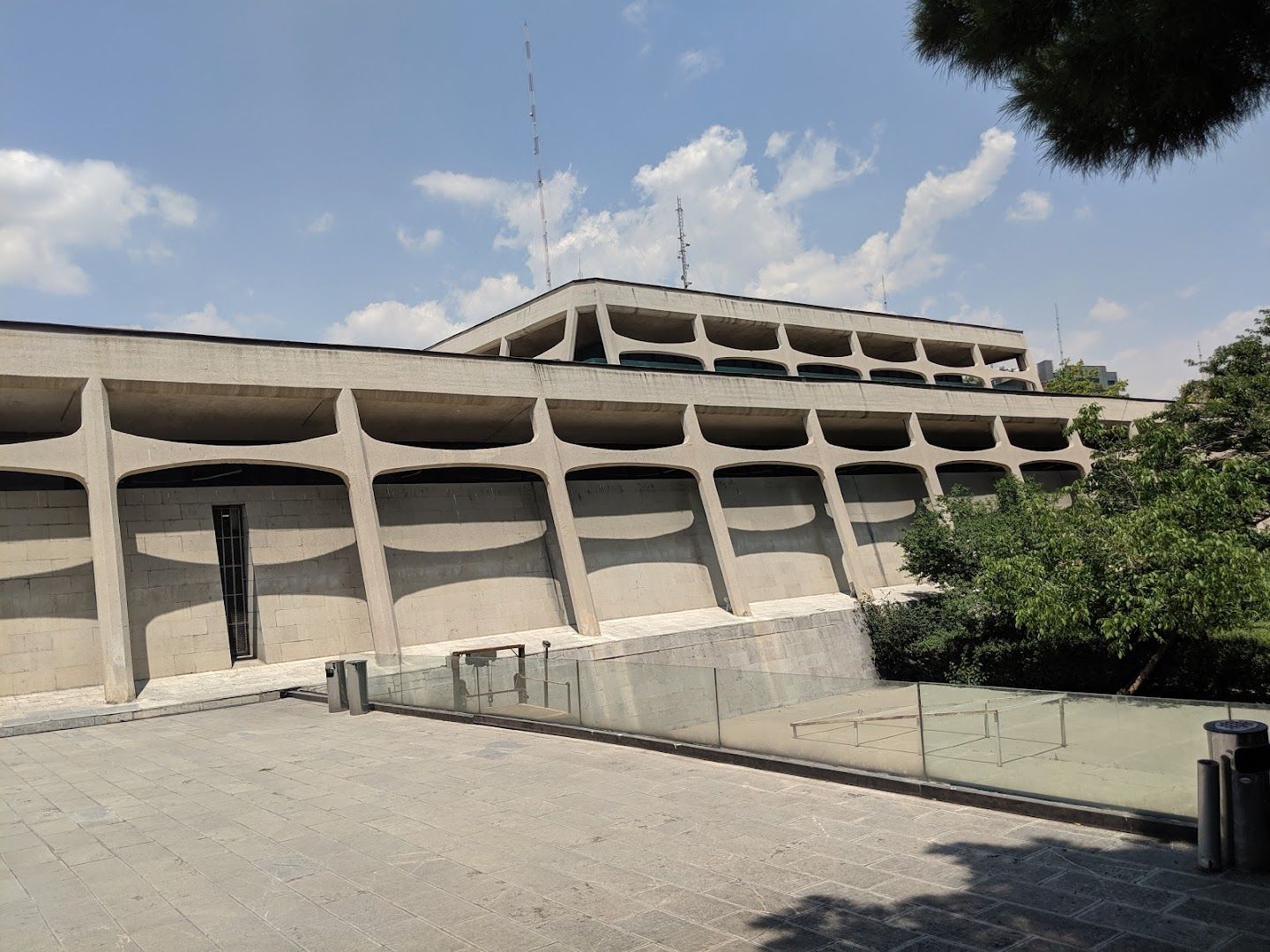
Location: Tehran Province, Tehran, Dr Fatemi St, Iran
Working Days:
Sunday: 9AM–5PM
Monday: Closed
Tuesday: 9AM–5PM
Wednesday: 9AM–5PM
Thursday: 9AM–5PM
Friday: 9AM–5PM
Saturday: 9AM–5PM
Phone: +98 21 8897 7903
Saadabad Historical Complex
Covering 740 acres, this area features scenic grounds, historic buildings & numerous museums.
This luxurious summer residence of the former monarchs sits in a tranquil 100-hectare area in the foothills of Darband in northern Tehran. The 18 buildings require separate entrance tickets, which are available for purchase at the gate. The 54-room White Palace from Mohammad Reza Shah’s reign is a must-visit.
Sa’adabad Museum lies in a vast lush site in the foothills of Mount Tochal, north of Tehran. In other words, the green Valley of Darband in Tajrish district provides a lovely atmosphere and fresh climate. You can also enjoy strolling through natural forests, springs, Qantas, gardens, and greenhouses.
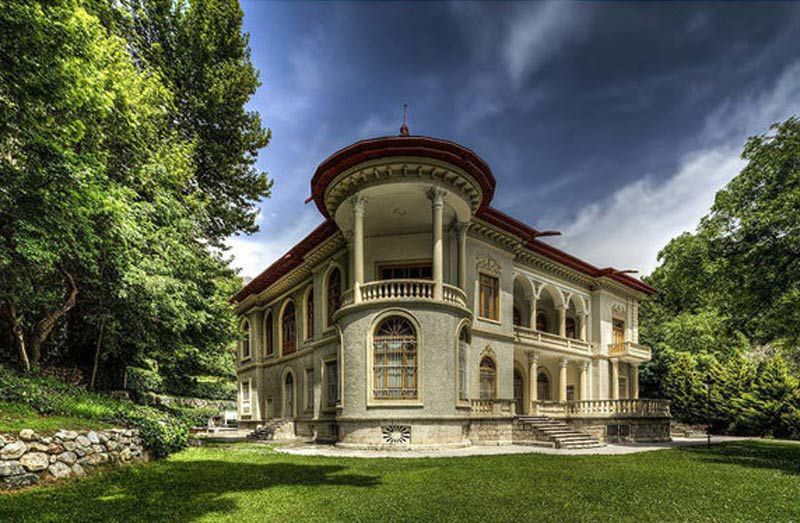
Location: Tehran Province, Tehran, District 1, Taheri St, Iran
Working Days:
Sunday: 9AM–4PM
Monday: 9AM–4PM
Tuesday: 9AM–4PM
Wednesday: 9AM–4PM
Thursday: 9AM–4PM
Friday: 9AM–4PM
Saturday: 9AM–4PM
Phone: +98 21 2275 2031
Website: http://sadmu.ir/
Museum of Time
Historic house museum exploring time via displays of antique clocks & watches, with a cafe & garden.
Time is something that you can easily be stripped of while you’re staying in Tehran, because of it being the massive metropolitan capital and industrial core of a middle-eastern country busy with growth and keeping up with the world. While losing time in Tehran has become rather ordinary for Iranians and more like a social-matter to bitch about, places like the time museum in Tehran are examples of some few locations that you can really cherish the real value of time and preserve it while taking in some culture and history of Iran as well.
The two-story mansion, dating back to the Qajar era, is a mixture of architecture, amazing plaster works, and tile works. Outdoors, the visitors can see some models of old sundials, clepsydras, hourglasses, and the like some going back to 5000 years ago. The first floor exhibits the evolution of clocks from the seventeenth century to the present.
Apart from the great collection of different clocks and other instruments for measuring and displaying time, the building itself and the garden of Time museum with a beautiful coffeehouse are great for dedicating a few hours for exploring them.
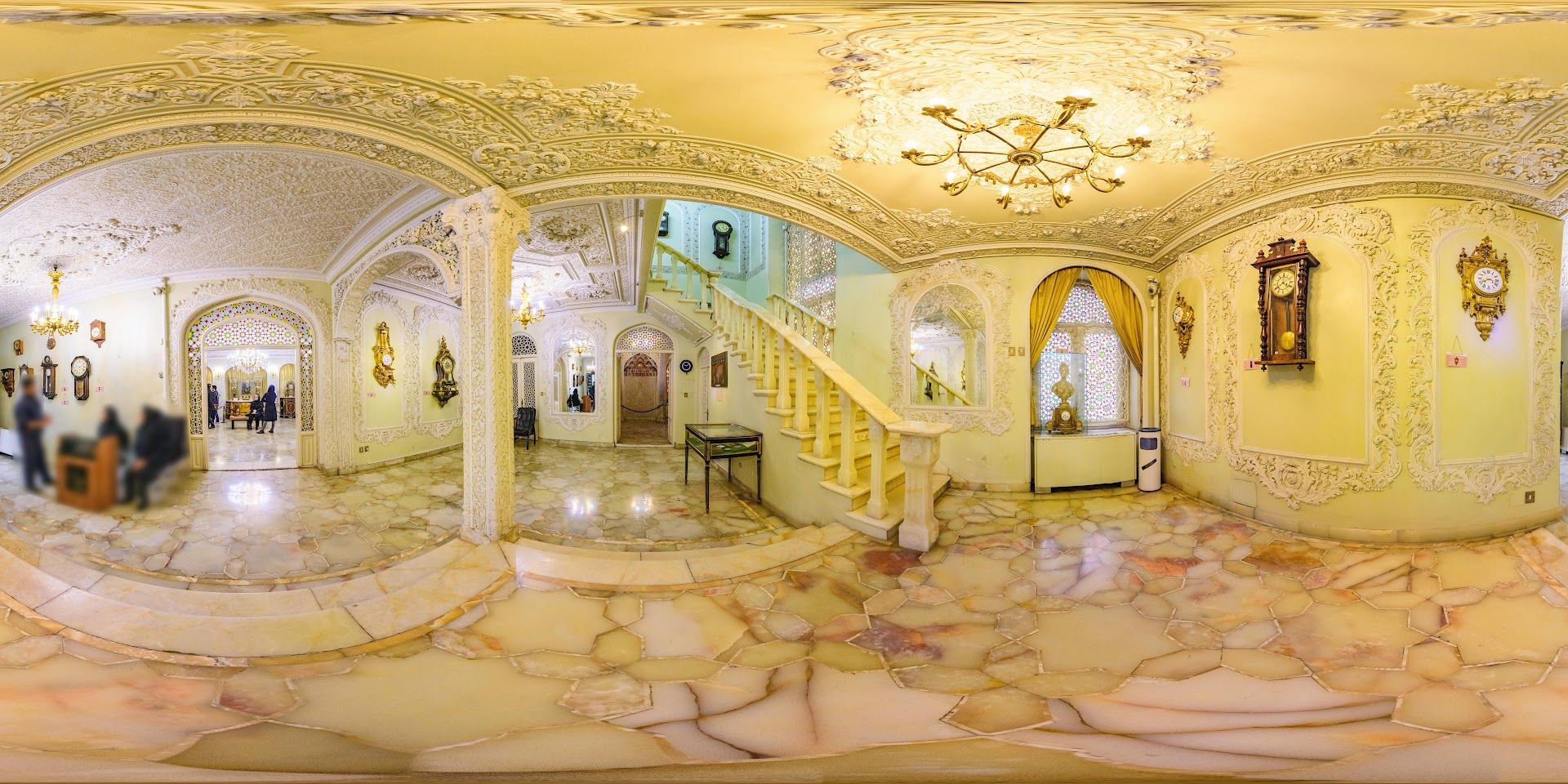
Location: Tehran Province, Tehran, First floor of the Major-Sargar Fallahi، Za’faraniye, street No. 12، Iran
Working Days:
Sunday: 9AM–6:30PM
Monday: 9AM–6:30PM
Tuesday: 9AM–6:30PM
Wednesday: 9AM–6:30PM
Thursday: 9AM–6:30PM
Friday: 9AM–6:30PM
Saturday: 9AM–6:30PM
Phone: +98 21 2241 7336
Website: https://cio-museums.org/museum/time/
Moghadam Museum
Collections of Islamic art & antiquities displayed in a striking tiled mansion with scenic gardens.
Moghadam Museum is one of the most precious museums in Tehran. The house dates back to the Qajar period. Mohsen Moghadam- one of the Iranian pioneers of archeology who inherited the house from his father- and his French wife dedicated life to collecting valuable historical objects from around the world.
This museum is in a house with traditional architecture in the center of Tehran. It’s among a small garden with multiple turquoise ponds and many trees in the yard. They built this house about 200 years ago.
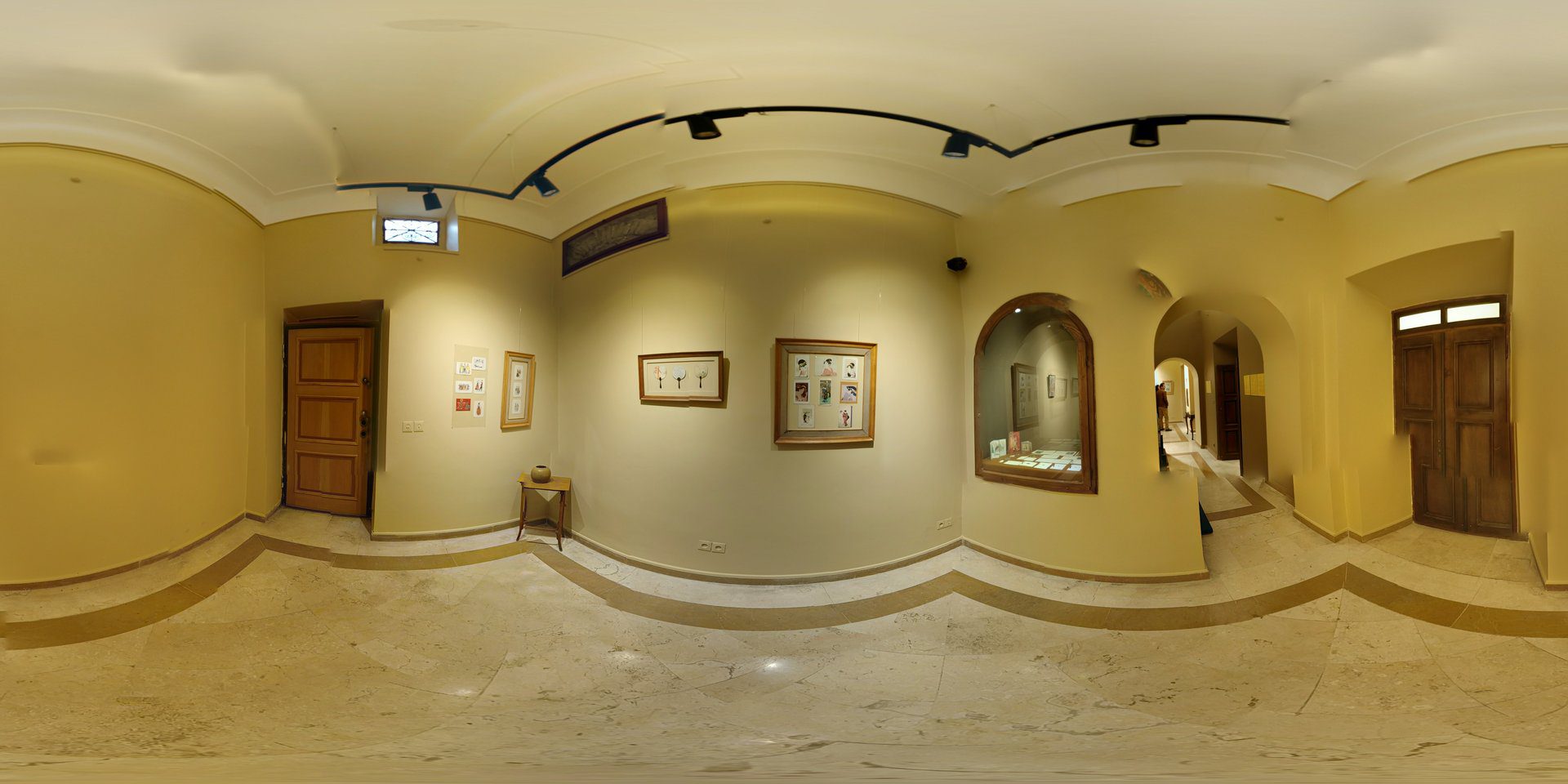
Location: Tehran, Imam Khomeini St., after Sheikh Hadi, next to Bank Mellat, No. 251
Working Days:
Sunday: 10AM–6PM
Monday: 10AM–7PM
Tuesday: 10AM–7PM
Wednesday: 10AM–7PM
Thursday: 10AM–7PM
Friday: 10AM–7PM
Saturday: Closed
Phone: +98 21 6646 3144
Website: https://museums.ut.ac.ir/fa
Niavaran Palace Complex
Opulent palace complex in bucolic surrounds featuring majestic residences, landscaped gardens & art.
The six museums that make up this cultural-historic complex lie within the confines of a five-hectare, landscaped garden. Niavaran Palace was the main residence of the Shah and his family during the last decade of their rule. The magnificent carpets and stylish gowns and uniforms of past monarchs are particularly noteworthy.
Niavaran Palace is a historical complex located in a landscaped garden in the north of Tehran. The complex traces its origin to the Qajar dynasty. It was used as the summer residence by the Qajar monarchs.
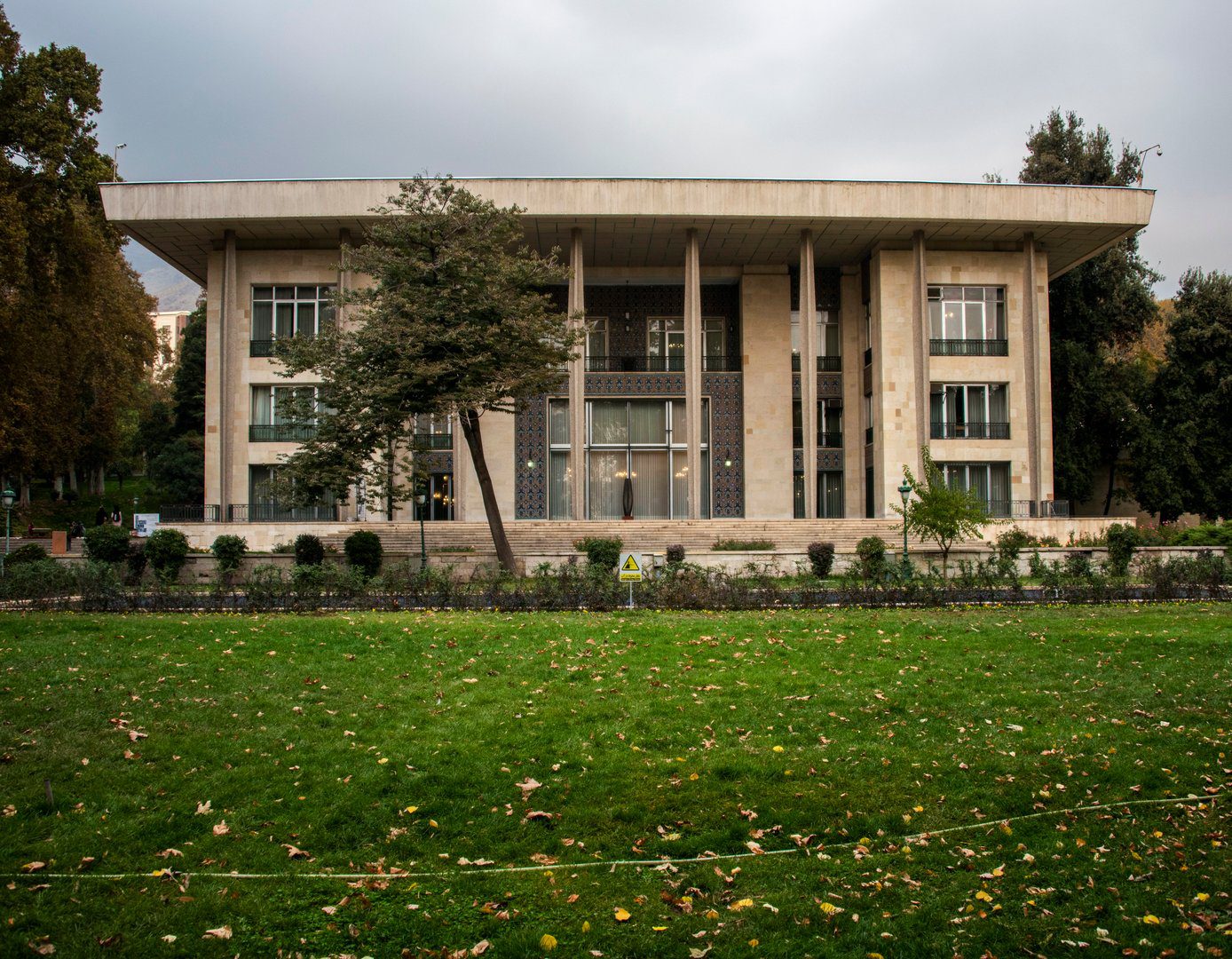
Location: Tehran Province Tehran District 1 Niavaran St, Niavaran Square, Iran
Working Days:
Sunday: 9AM–3PM
Monday: 9AM–3PM
Tuesday: 9AM–3PM
Wednesday: 9AM–3PM
Thursday: 9AM–3PM
Friday: 9AM–3PM
Saturday: 9AM–3PM
Phone: +98 21 2228 2012
Website: http://niavaranmu.ir/
Iranian Artists Forum
A favorite hangout among the art crowd and safe haven for stray cats, the Iranian Artists’ Forum offers a peek into the contemporary art scene of Tehran. This free gallery exhibits a variety of works from local artists that rotate on a monthly basis. Cafés, a vegetarian restaurant, and an arts and crafts shop with unique gifts dot the other buildings.
To discover Iran’s contemporary art scene, head to the Iranian Artists’ Forum. It’s a great hangout spot. Inside you’ll find a range of work by local artists which change every month.
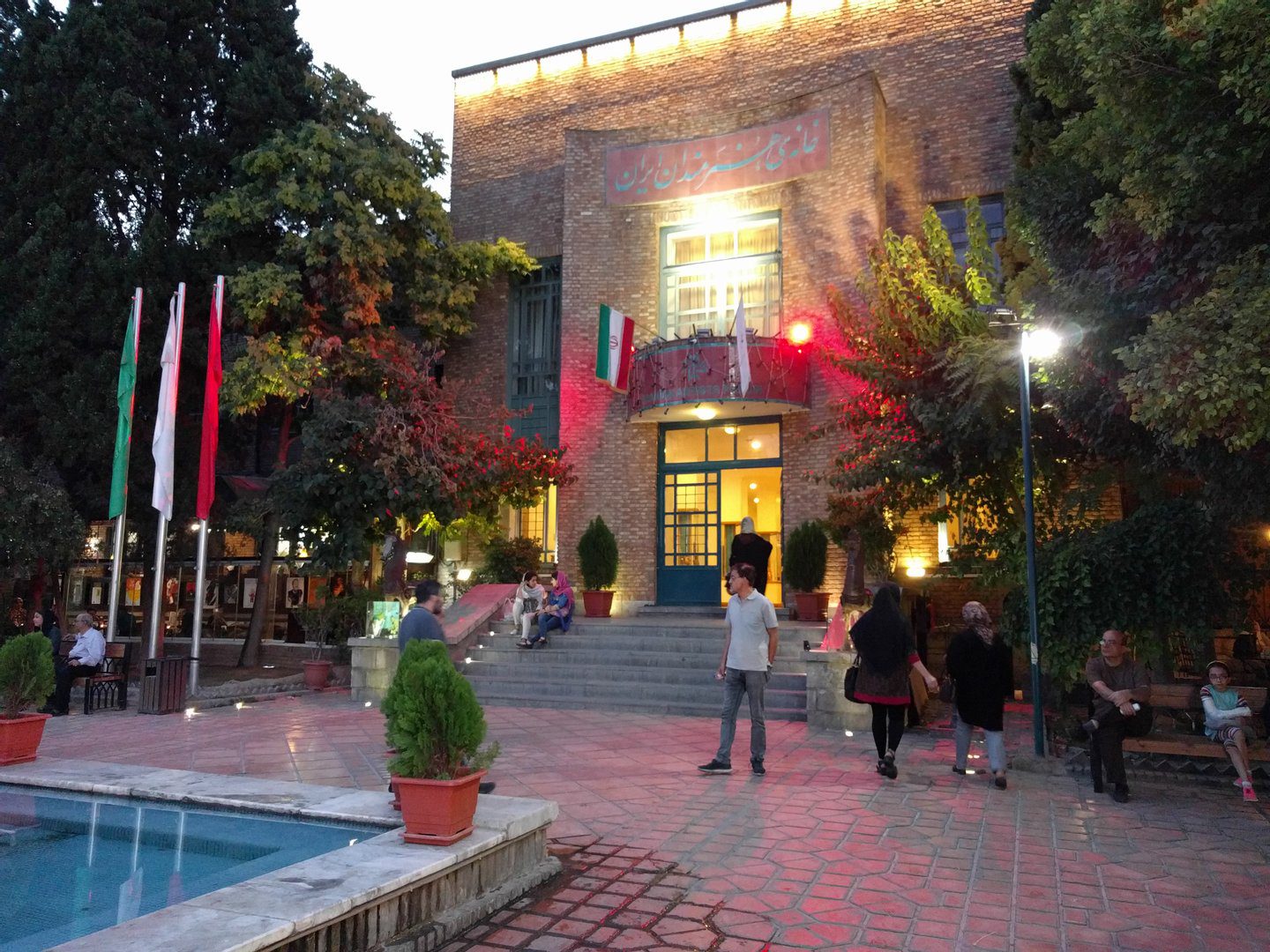
Location: Tehran, Taleghani St., North Mousavi St. (Forsat), South side of Art Garden
Working Days:
Sunday: 10AM–8PM
Monday: 10AM–8PM
Tuesday: 10AM–8PM
Wednesday: 10AM–8PM
Thursday: 10AM–8PM
Friday: 10AM–8PM
Saturday: 10AM–8PM
Phone: +98 21 8831 0457
Website: http://iranartists.org/
Cinema Museum of Iran
This museum at the Ferdows Garden features exhibits on Iranian cinema in a 19th-century building.
It is located in a beautiful garden named Ferdows and in a historic building which dates back to the Qajar era. The museum showcases different aspects of Iranian cinema and can easily entertain you for a few hours if you are interested in discovering this less-known aspect of Iranian culture. There are also some coffeehouses and a cinema in this complex, where you can enjoy your day after visiting the museum.
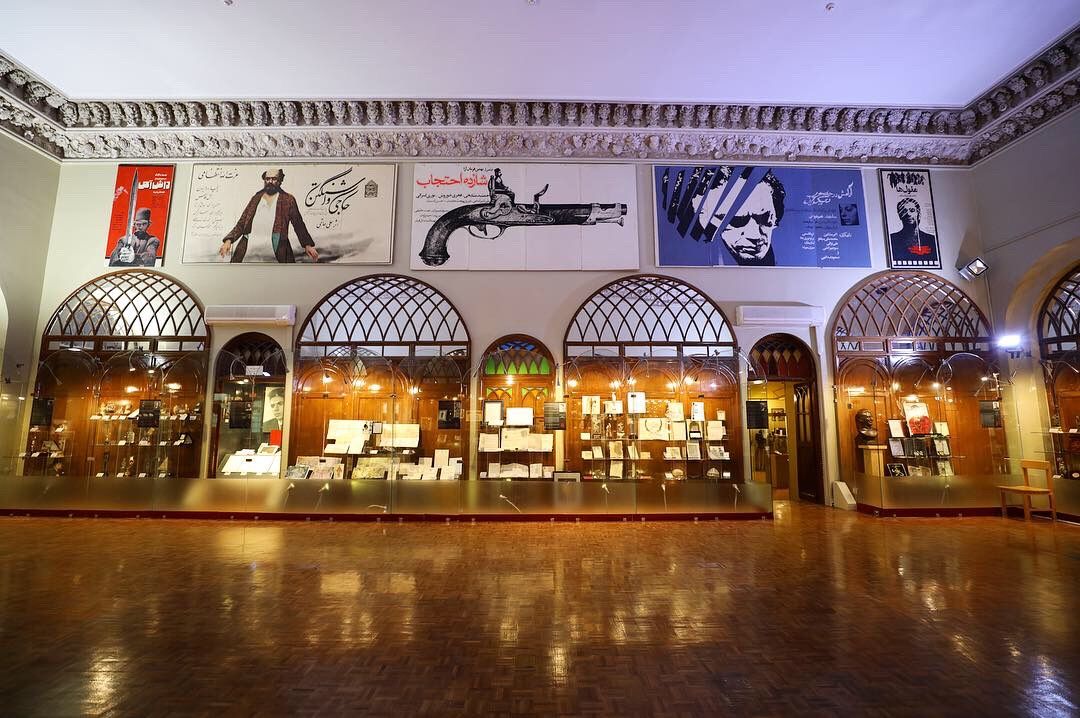
Location: Vali Asr Ave, Tehran 11369 Iran
Working Days:
Sunday: 9AM–6PM
Monday: 9AM–6PM
Tuesday: 9AM–6PM
Wednesday: 9AM–6PM
Thursday: 9AM–6PM
Friday: 3:30–10PM
Saturday: Closed
Phone: +98 21 2270 5005
Omidvar Brothers’ Museum
There are many museums in the Sa’ad Abad complex and to be honest, all of them are worth a visit. But this small, yet amazing museum is really unique and special because it displays an amazing collection gathered from all around the world by the first Iranian tourists called Omidvar brothers. They started their journey on a motorcycle in 1954 and what they have collected during their travels to different continents and unique cultures such as primitive tribes, are really interesting and worth a look.
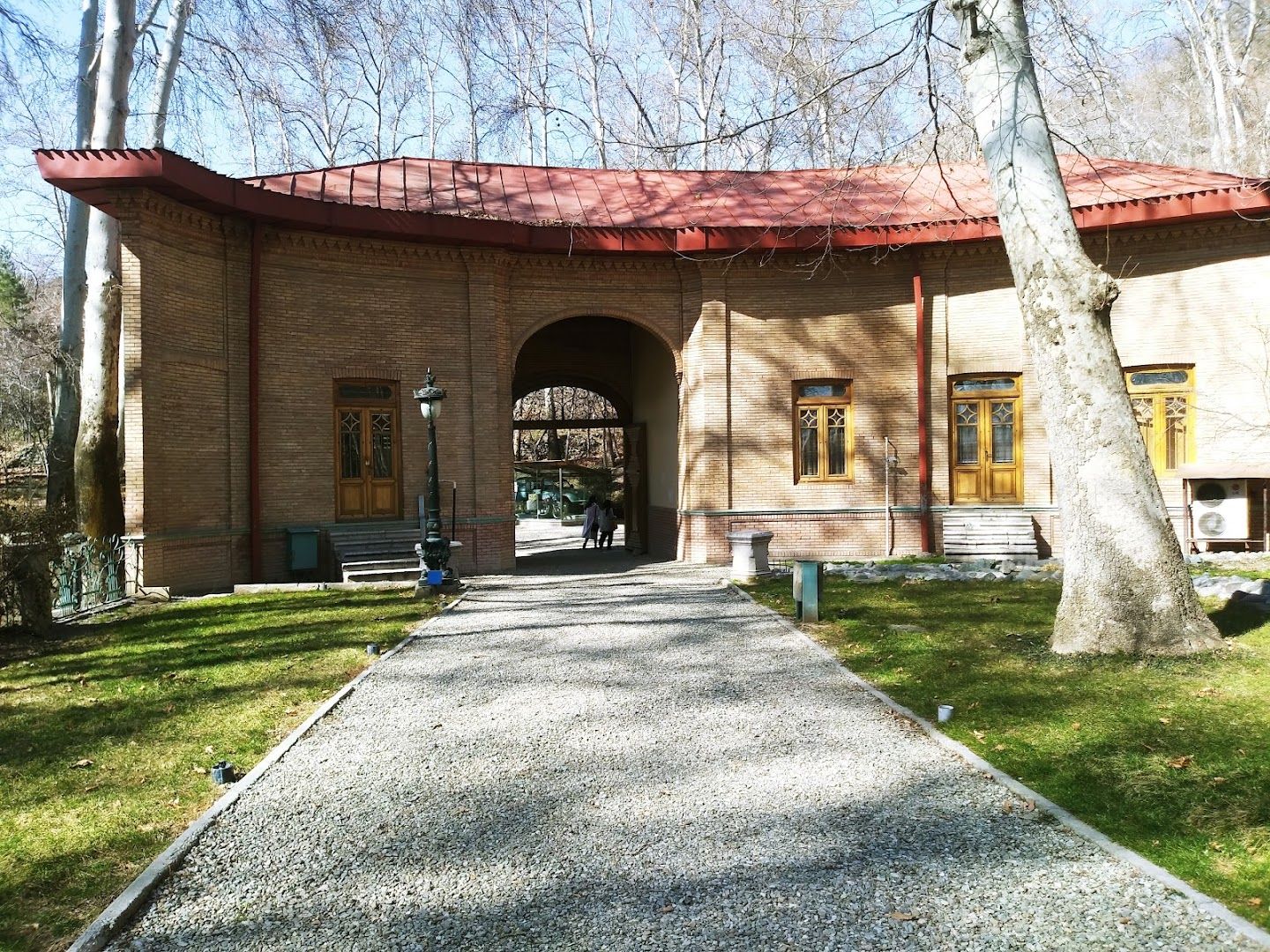
Location: Tehran Province, Tehran, Darband, Iran
Working Days:
Sunday: 9AM–4:30PM
Monday: 9AM–4:30PM
Tuesday: 9AM–4:30PM
Wednesday: 9AM–4:30PM
Thursday: 9AM–4:30PM
Friday: 9AM–4:30PM
Saturday: 9AM–4:30PM
Phone: +98 21 2275 2031
Islamic Revolution & Holy Defense Museum
This military museum features a shrine to martyrs, weapons exhibits, a shooting simulator & more.
A war museum may not sound like much fun, but rest assured, the Holy Defense Museum is an eye-opening experience you won’t want to miss. This museum, which sits on a well-manicured, 21-hectare green space, provides a harrowing account of the eight-year war with Iraq, known as the “Holy Defense” in Persian. Inside, projections and audio recreate the horrors of war and the besieged city of Khorramshahr, while the surrounding grounds display rockets, tanks, and other artillery.
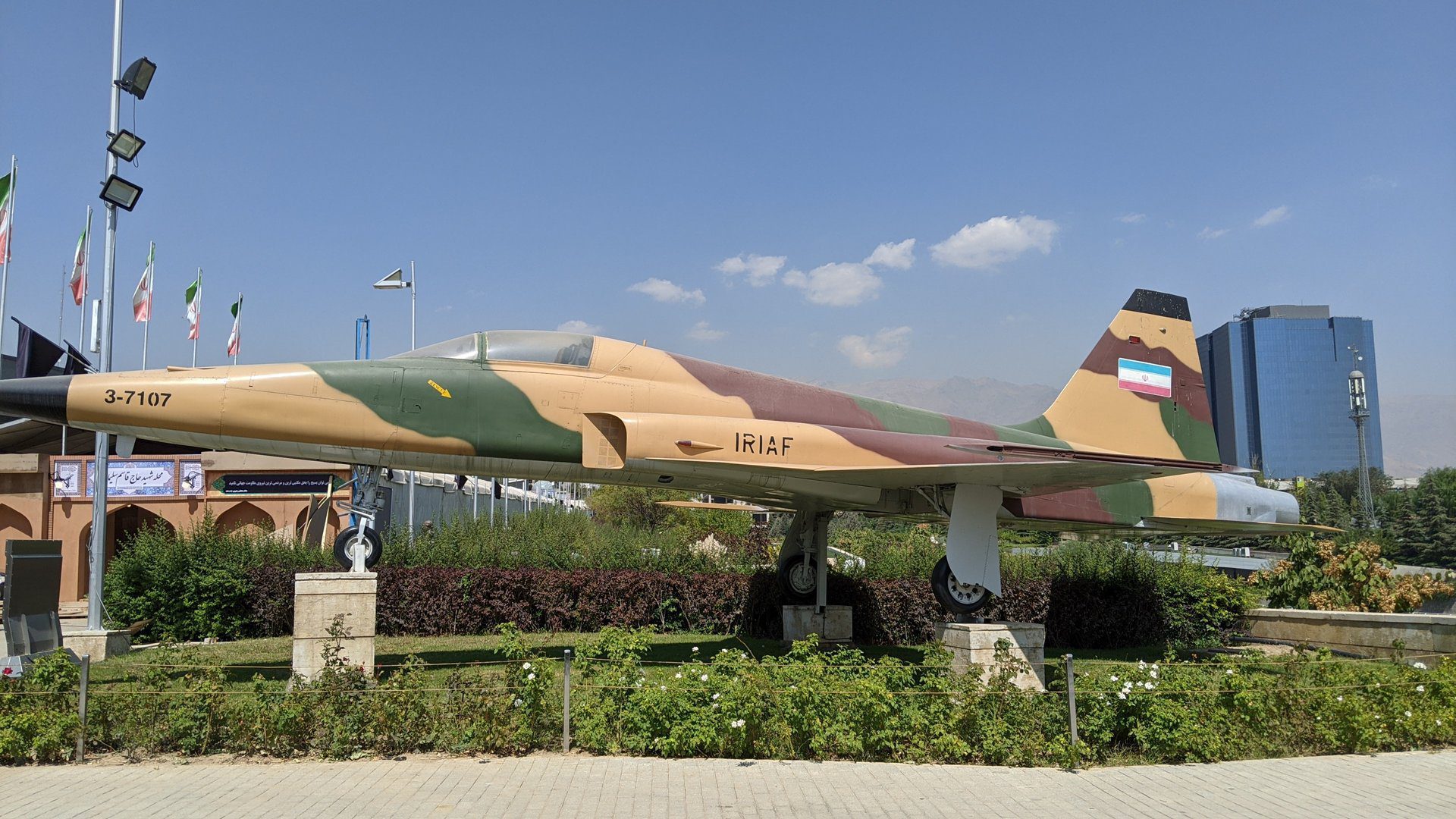
Location: Sarv St. Haqqani exp. Vanak square, Tehran 1536613114 Iran
Working Days:
Sunday: 9AM–5PM
Monday: 9AM–5PM
Tuesday: 9AM–5PM
Wednesday: 9AM–5PM
Thursday: 9AM–5PM
Friday: 10AM–5PM
Saturday: 9AM–5PM
Phone: +98 21 8865 7026
Website: http://www.iranrhdm.ir/
Museum of the Qasr Prison
Once a political prison, now an innovative museum & sculpture park with tranquil landscaped gardens.
Qasr Prison was originally built as a palace|© Babak Farrokhi / Flickr. Persian for “castle,” the Qasr Museum was originally built as a Qajar-era palace by architect Nikolai Markov, who combined elements of Persian and European architecture. It was later converted into two prisons (criminal and political) before permanently closing years later and reopening in 2012 as a museum.
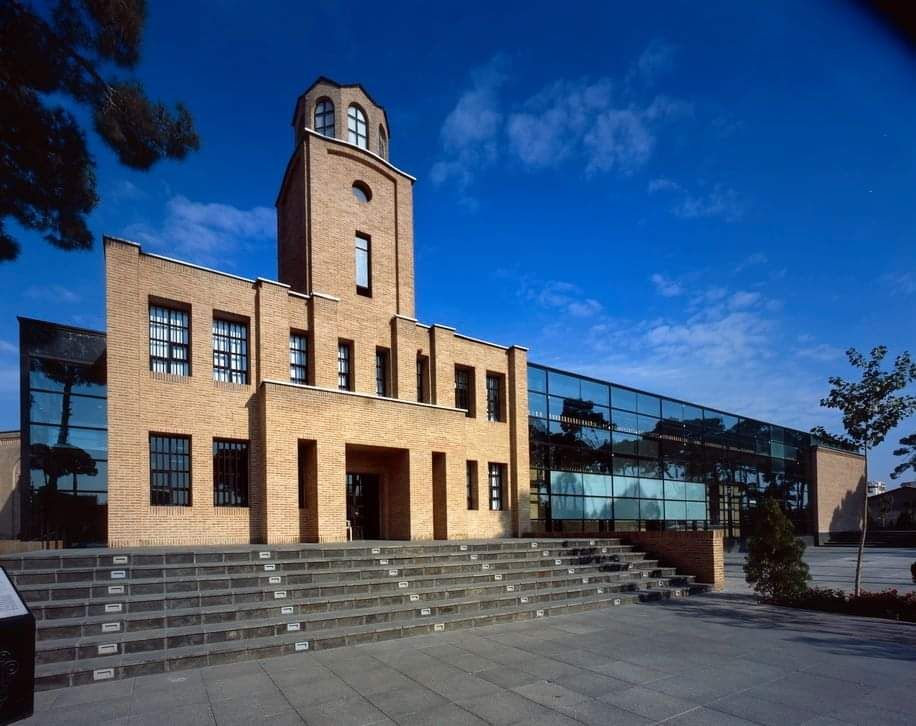
Location: Tehran Province, Tehran, Police Street، Iran
Working Days:
Sunday: 9AM–4PM
Monday: 9AM–4PM
Tuesday: 9AM–4PM
Wednesday: 9AM–4PM
Thursday: Closed
Friday: Closed
Saturday: 9AM–4PM
Phone: +98 21 8843 7393
Website: http://www.qasr.ir/
Negarestan Museum Garden
Restored summer gardens in a peaceful 1800s palace that is also a national monument.
This beautiful garden is located in the central part of Tehran. It was built in 1802 by order of Fath Ali Shah- the second Qajar king- as a summer residence. The halls are ornamented with mirrors.
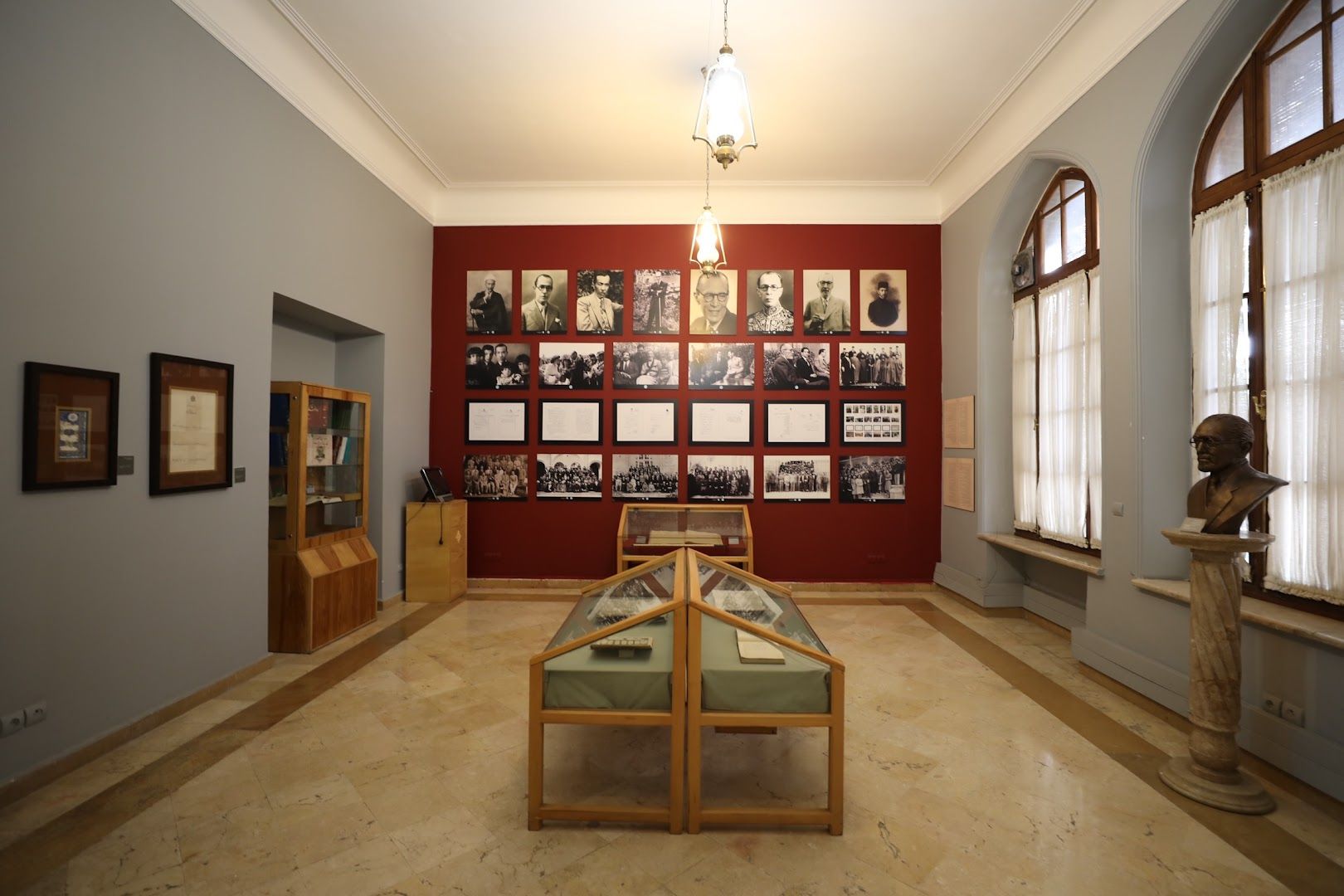
Location: Baharestan Square, Tehran 11369 Iran
Working Days:
Sunday: 10AM–6PM
Monday: 10AM–6PM
Tuesday: 10AM–6PM
Wednesday: 10AM–6PM
Thursday: 10AM–6PM
Friday: 10AM–6PM
Saturday: 10AM–6PM
Phone: +98 21 3311 9586
Website: http://negarestan.ut.ac.ir/
Masoudieh Palace
Tranquil, picturesque & royal palace & garden complex constructed in 1879.
The five-hectare Masoudieh Palace (Emarat-e Masoudieh) is one of the most beautiful historic houses in the center of Tehran dating back to the Qajar period. Its beautiful Iranian-European architecture made this place a popular attraction for the residents as well as the tourists and travelers who wish to experience Tehran city tour. The Divankhaneh palace is decorated with stucco, colored glasses, ceramics, gridded doors and windows, symmetrical floral patterns and geometrical motifs, calligraphy, and murals.
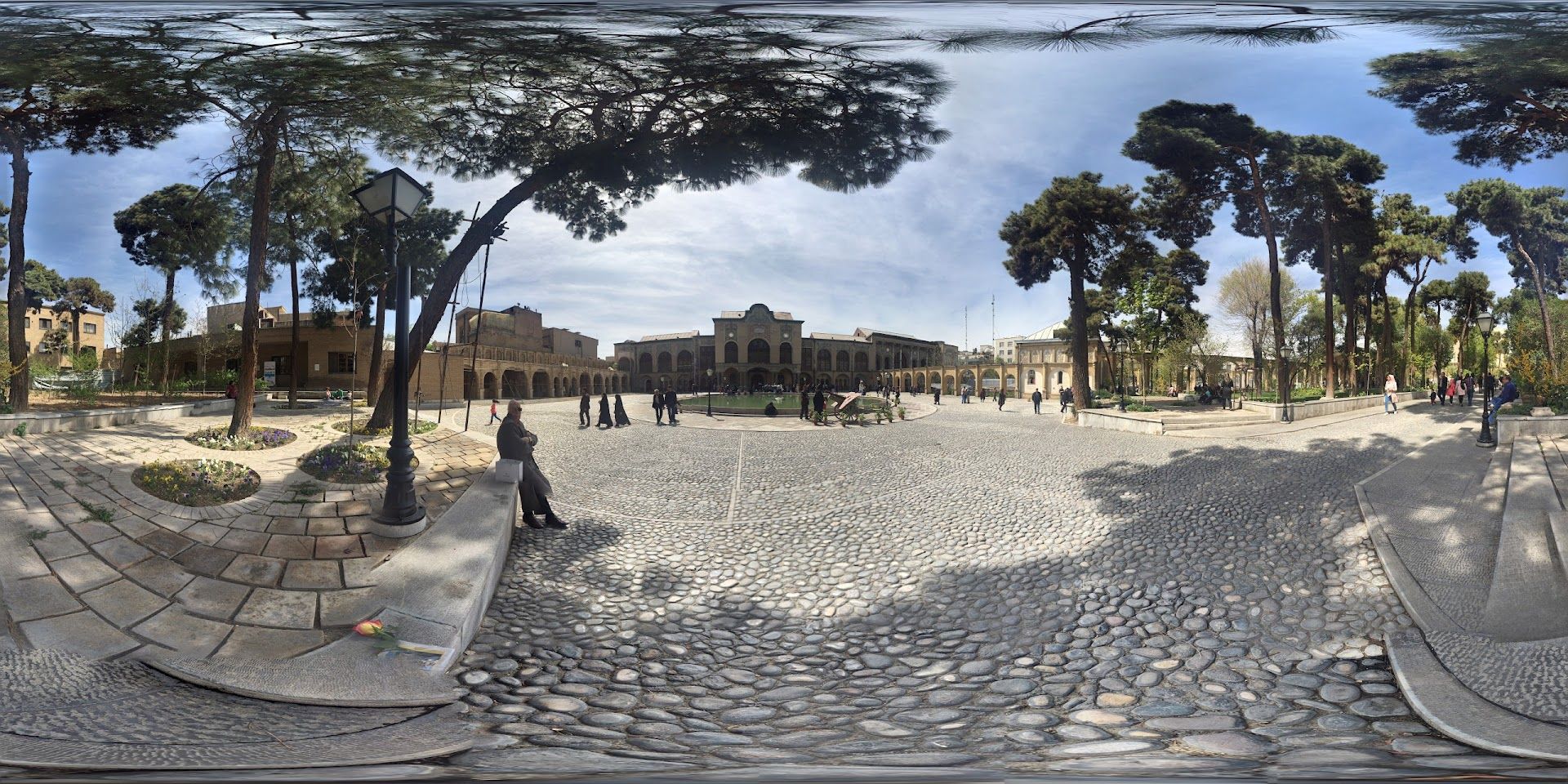
Location: Tehran, Mellat St, Iran
Working Days:
Sunday: 9AM–4PM
Monday: 9AM–4PM
Tuesday: 9AM–4PM
Wednesday: 9AM–4PM
Thursday: 9AM–4PM
Friday: 1:05–4PM
Saturday: 9AM–4PM
Phone: +98 21 3399 2012
Iranian Art Museum Garden
Early 20th-century flower gardens with fountains, plus scale replicas of Iranian mosques & forts.
Though Museum Garden of Iranian Arts (or Bagh-e Honar-e Irani) is not a historical site, it contains the replicas of twelve Iranian historical buildings and monuments in miniature size. The small models of prominent tourist sites, made by Italian artists in the Pahlavi period, such as Tehran’s Azadi Tower, Zanjan’s Soltaniyeh Dome, Kashan’s Fin Garden, Shiraz’s Naqsh-e Rustam, Urmia’s St. Thaddeus Monastery, and Isfahan’s Chehel Sotoun are scattered in the beautiful garden surrounded by handicraft shops, a bookstore, a restaurant and a cafe. Here’s a nice spot for walking, shopping, eating, relaxing, and mingling with locals.
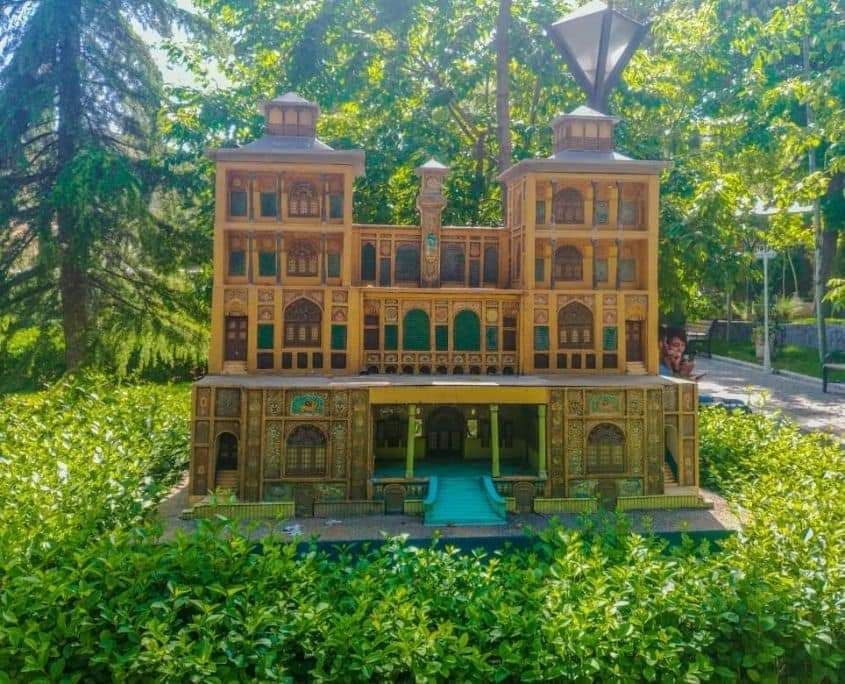
Location: Tehran Province, Tehran, Dr Hesabi St, Iran
Working Days:
Sunday: 9:30AM–11:30PM
Monday: 9:30AM–11:30PM
Tuesday: 9:30AM–11:30PM
Wednesday: 9:30AM–11:30PM
Thursday: 9:30AM–11:30PM
Friday: 9:30AM–11:30PM
Saturday: 9:30AM–11:30PM
Phone: +98 21 2268 6063
Website: https://baghehonar.farhangsara.ir/
Museum of Music
If you are interested in knowing more about Iranian traditional instruments and Iranian music culture in general, this would the perfect place for you. Located in the northern part of Tehran near Tajrish square, this museum will be a great spot for music lovers. You can also hear some samples in the museum to grasp the spirit of Iranian music.
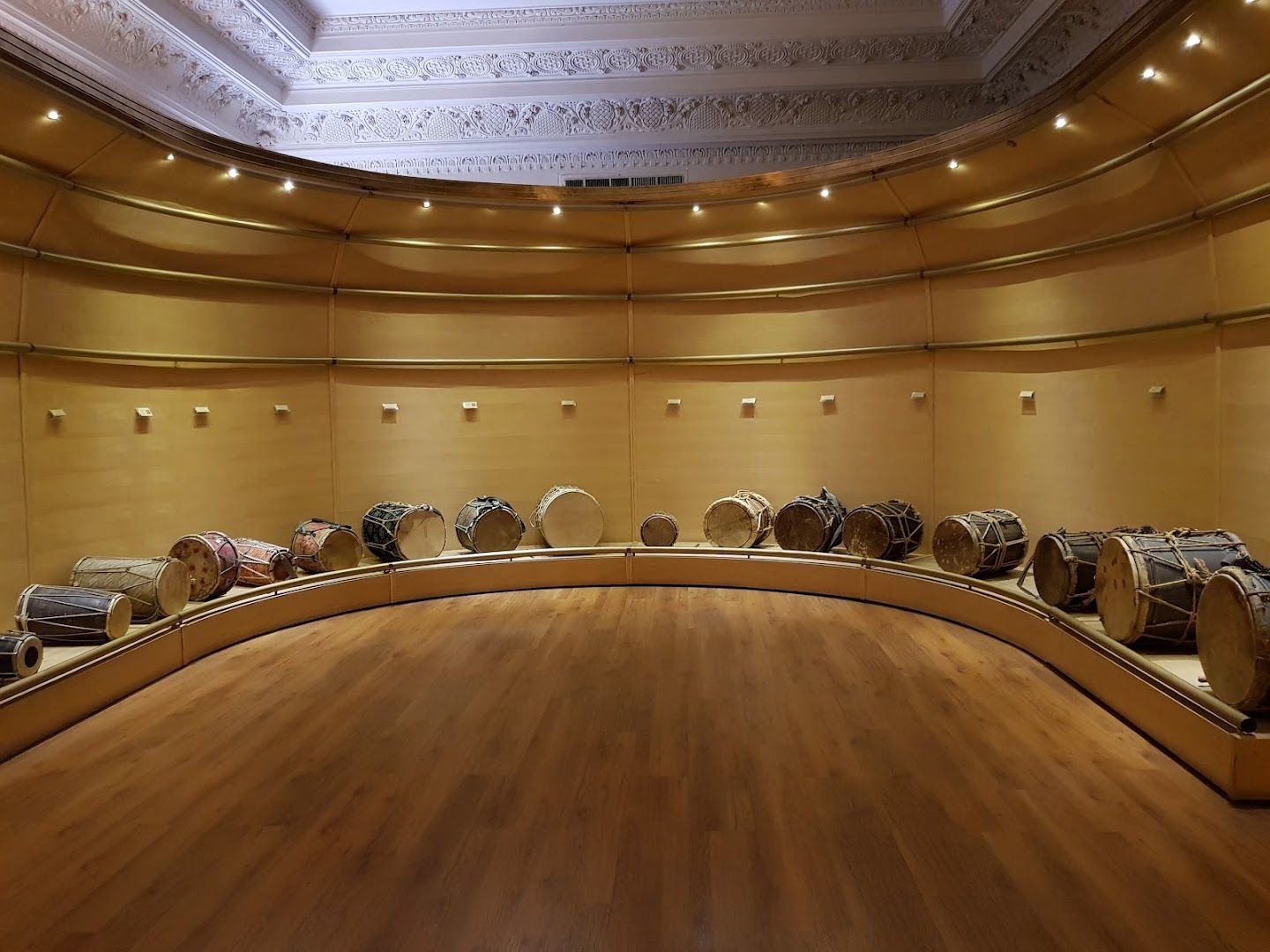
Location: 9 Muze St. Tajrish Square, Tehran 11369 Iran
Working Days:
Sunday: 10AM–5PM
Monday: 10AM–5PM
Tuesday: 10AM–5PM
Wednesday: 10AM–5PM
Thursday: 10AM–5PM
Friday: Closed
Saturday: Closed
Phone: +98 21 2223 1708
Jahan Nama Museum
As the museum was originally a private collection, it is very small in comparison to other museums, but the collection is among the best ones that you can find in Tehran. Collected by former queen of Iran, Farah Diba, the museum displays artworks from renowned eastern and western artists such as Warhol, Picasso and Joan Miró as well as some ancient works from Eygept, India, and Africa. It is located in Niavaran Complex and you can read about it in detail here.
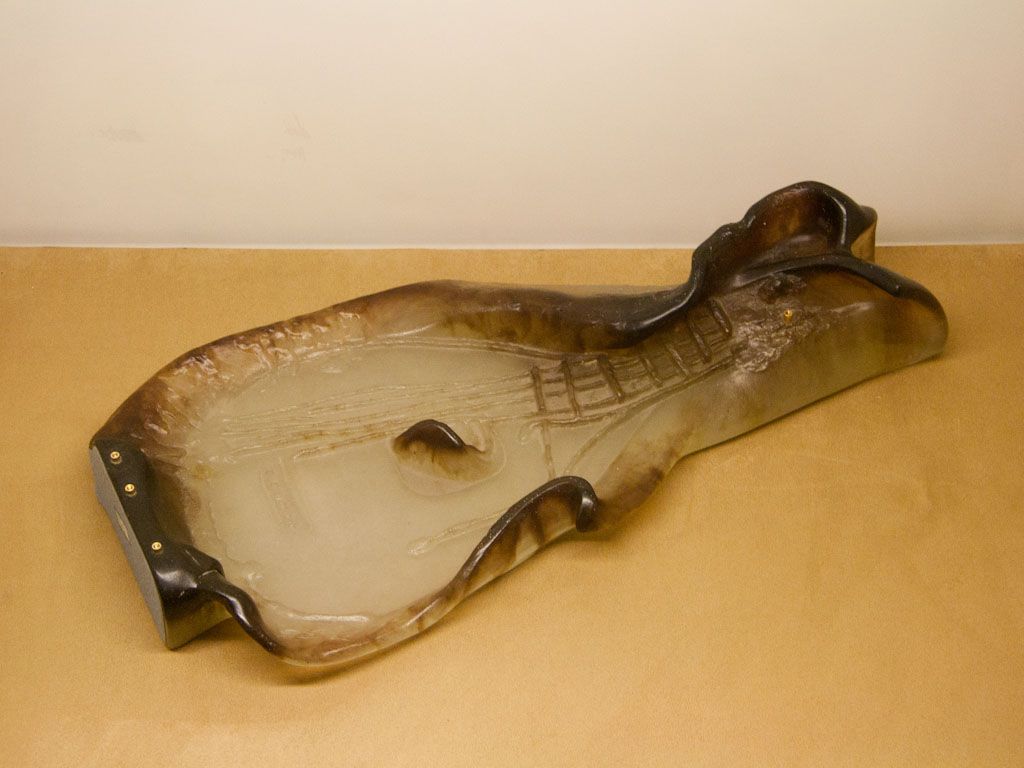
Location: Bahonar Sq. (Bahonar St.), Tehran, Iran
Working Days:
Sunday: 9AM–5PM
Monday: 9AM–5PM
Tuesday: 9AM–5PM
Wednesday: 9AM–5PM
Thursday: 9AM–5PM
Friday: 9AM–5PM
Saturday: 9AM–5PM
Phone: +98 21 2228 2012
Tehran Peace Museum
Tehran The capital of Iran that is much like all the capitals of the world and is not a very old city in Iran but is full of museums to help you better understand the Iranian culture. National history is identity of each country.
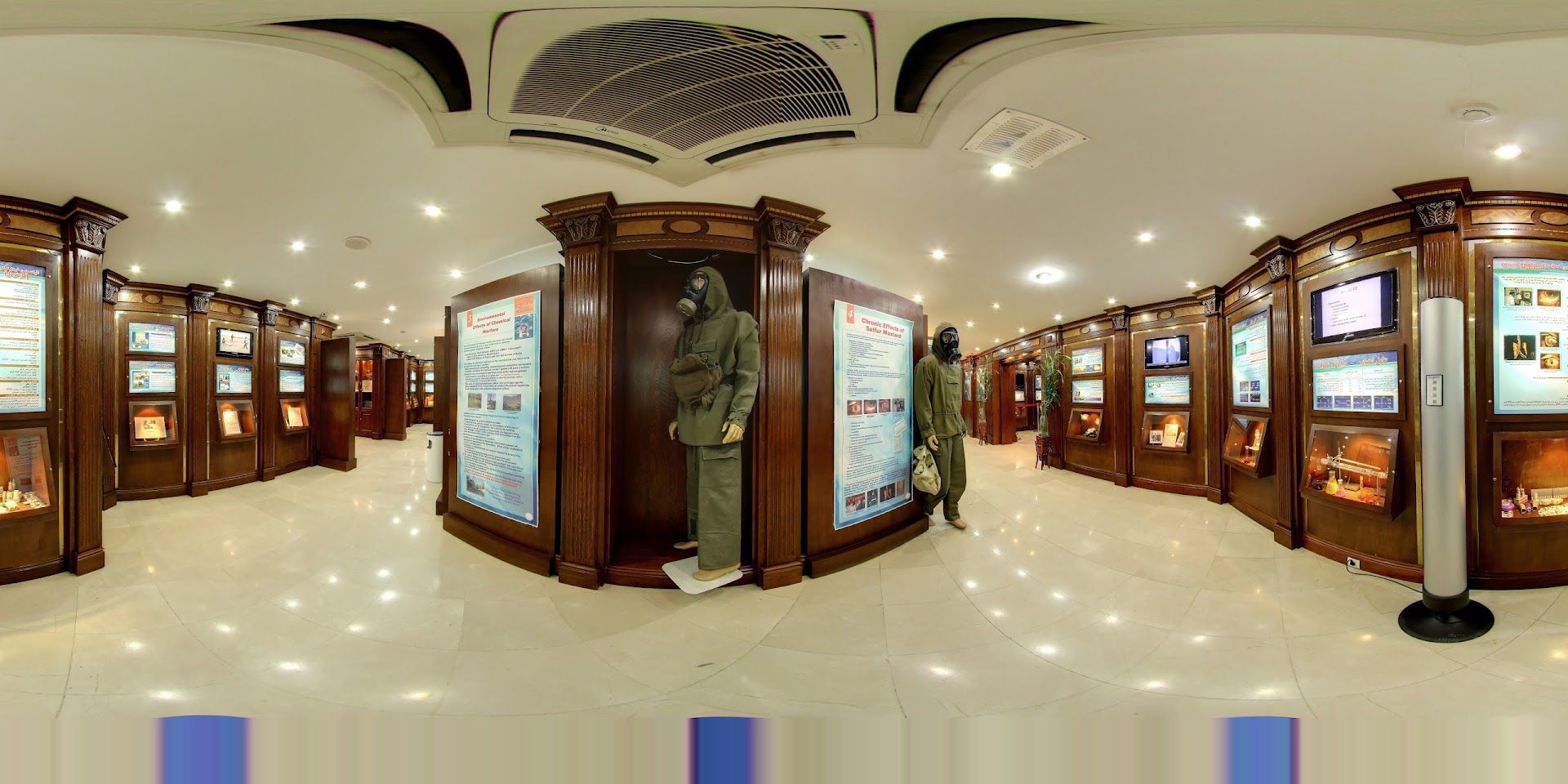
Location: Tehran Province, Tehran, District 12, North Gate, City Park (Park e Shahr)، Fayyazbakhsh, Iran
Working Days:
Sunday: 9AM–12:30PM, 2–5PM
Monday: 9AM–12:30PM, 2–5PM
Tuesday: 9AM–12:30PM, 2–5PM
Wednesday: 9AM–12:30PM, 2–5PM
Thursday: Closed
Friday: Closed
Saturday: 9AM–12:30PM, 2–5PM
Phone: +98 21 6675 6945
Website: http://www.tehranpeacemuseum.org/
Niavaran Cultural Center
Niavaran Cultural Center’s building is located in the northeast region of Tehran. This building is a postmodern structure that exploits the elements…
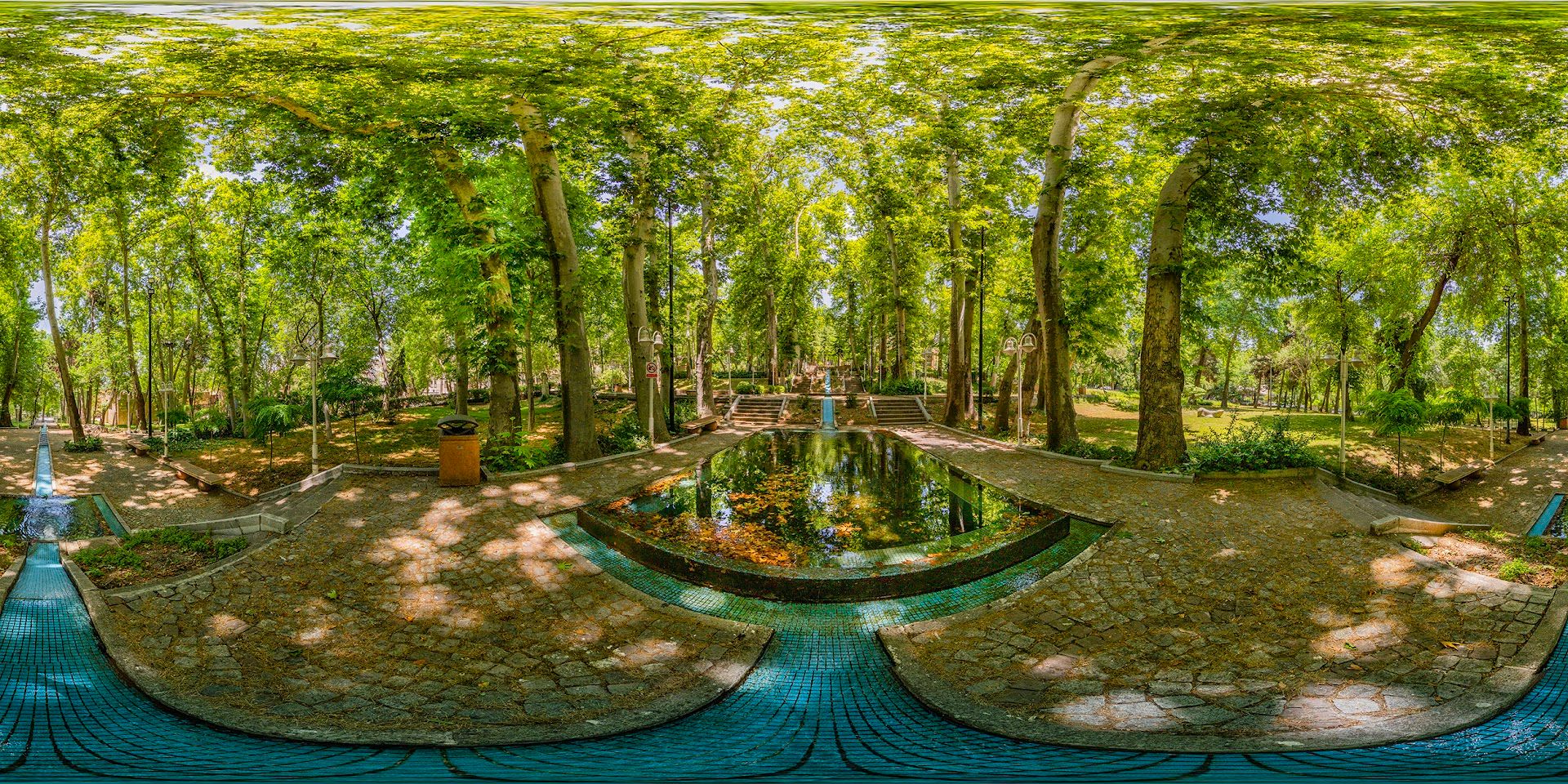
Location: Tehran Province, Tehran, District 1, Farhangsara St, Iran
Working Days:
Sunday: 10AM–10PM
Monday: 10AM–10PM
Tuesday: 10AM–10PM
Wednesday: 10AM–10PM
Thursday: 10AM–10PM
Friday: 10AM–10PM
Saturday: 10AM–10PM
Phone: +98 21 2228 7081
Website: http://www.fniavaran.ir/
Haftchenar’s Museum of Wildlife and Natural Monuments
Natural Monuments and Wildlife Museum This museum has a unique collection of mammals, birds, insects and also geologic periods. Besides, there is a taxidermy workshop that displays techniques for preservation of natural non-living animal bodies. Opening Hours:8:30-12:30, 13:30-20:30Opening Days:Every day except Saturdays.
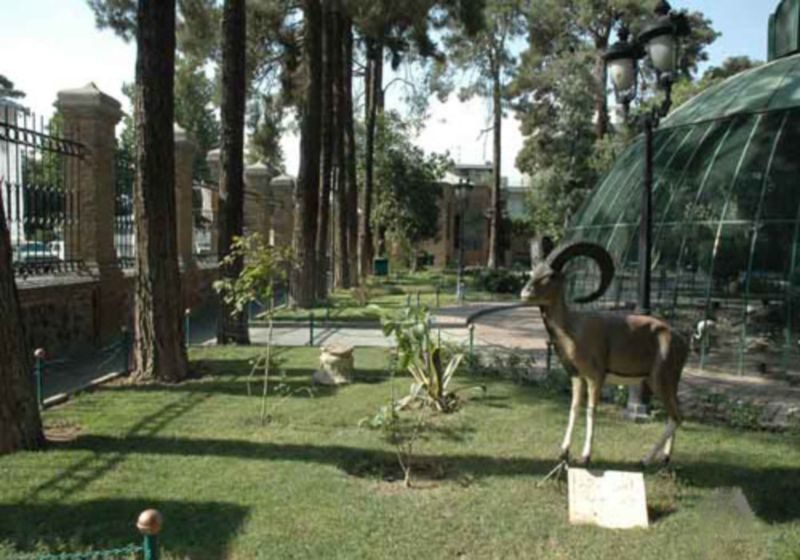
Location: Tehran, north to south Navab Safavi Highway, Borjank, Borjank Square
Working Days:
Sunday: 8AM–9PM
Monday: 8AM–9PM
Tuesday: 8AM–9PM
Wednesday: 8AM–9PM
Thursday: 8AM–9PM
Friday: 8AM–9PM
Saturday: Closed
Phone: +98 21 5573 8745
Shirin Art Gallery
With branches in both Tehran and New York, the Shirin Art Gallery plays a pivotal role in introducing Iranian contemporary art to the Western market and in challenging international misconceptions about Middle Eastern Art. The Tehran branch opened in 2005 with the New York space following suit in 2013 in the prestigious Chelsea Gallery District. Shirin Art Gallery, 13th Street, Tehran, Tehran Province, Iran, +98 21 8834 3969
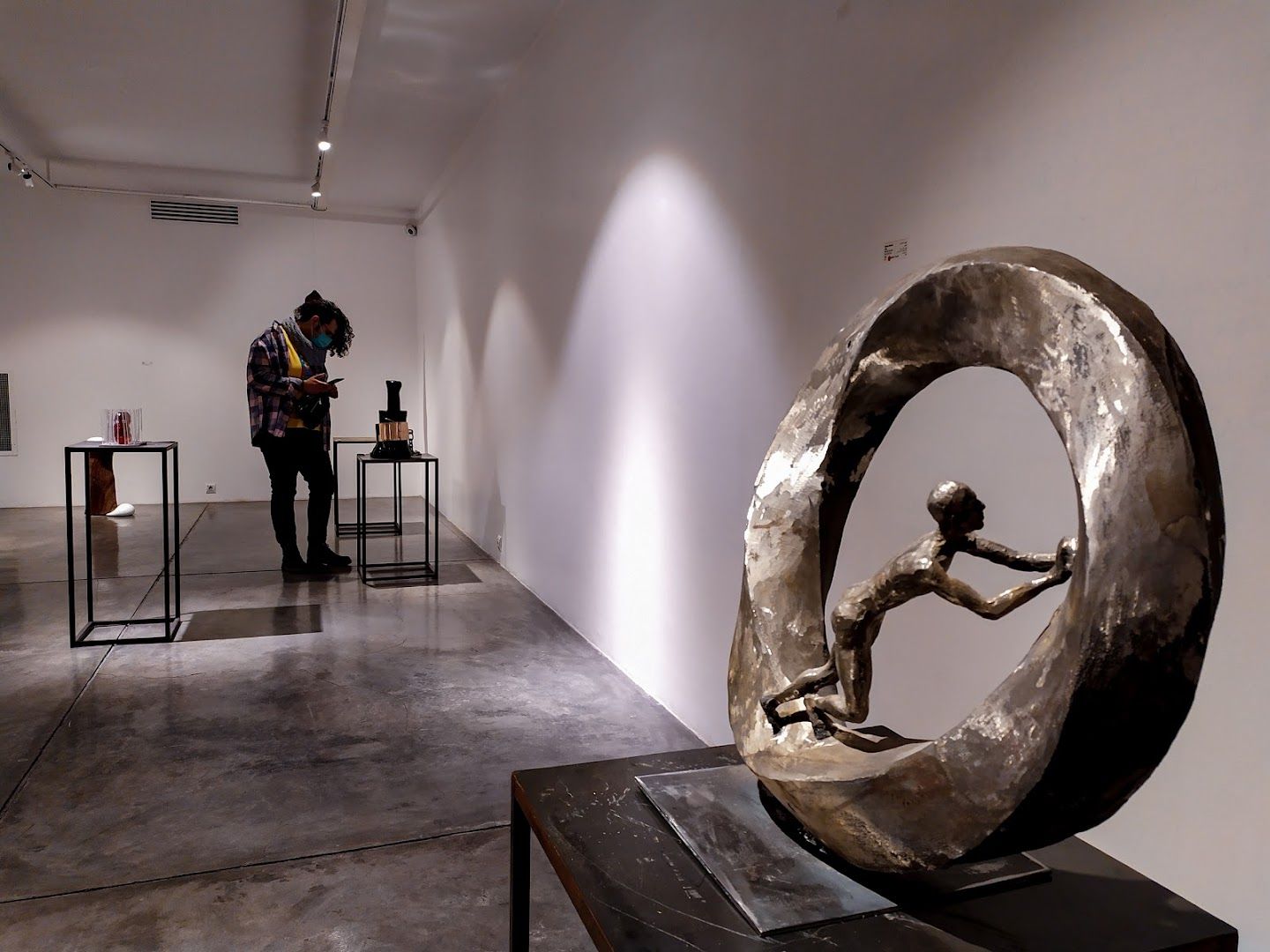
Location: Tehran Province, Tehran, District 6, 13th St, No. 5, Iran
Working Days:
Sunday: 11AM–7PM
Monday: Closed
Tuesday: 11AM–7PM
Wednesday: 11AM–7PM
Thursday: 11AM–7PM
Friday: 4–8PM
Saturday: 11AM–7PM
Phone: +98 21 8834 3969
Website: http://www.shiringallery.com/
Seyhoun Art Gallery
The Seyhoun Art Gallery has successfully held over 1,200 exhibitions across a diverse set of practices including sculpture, painting, photography, video, graphics and digital arts. Established in 1966, the gallery is one of the pioneers in exhibiting modern Iranian art and encouraging the talents of Iranian artists.
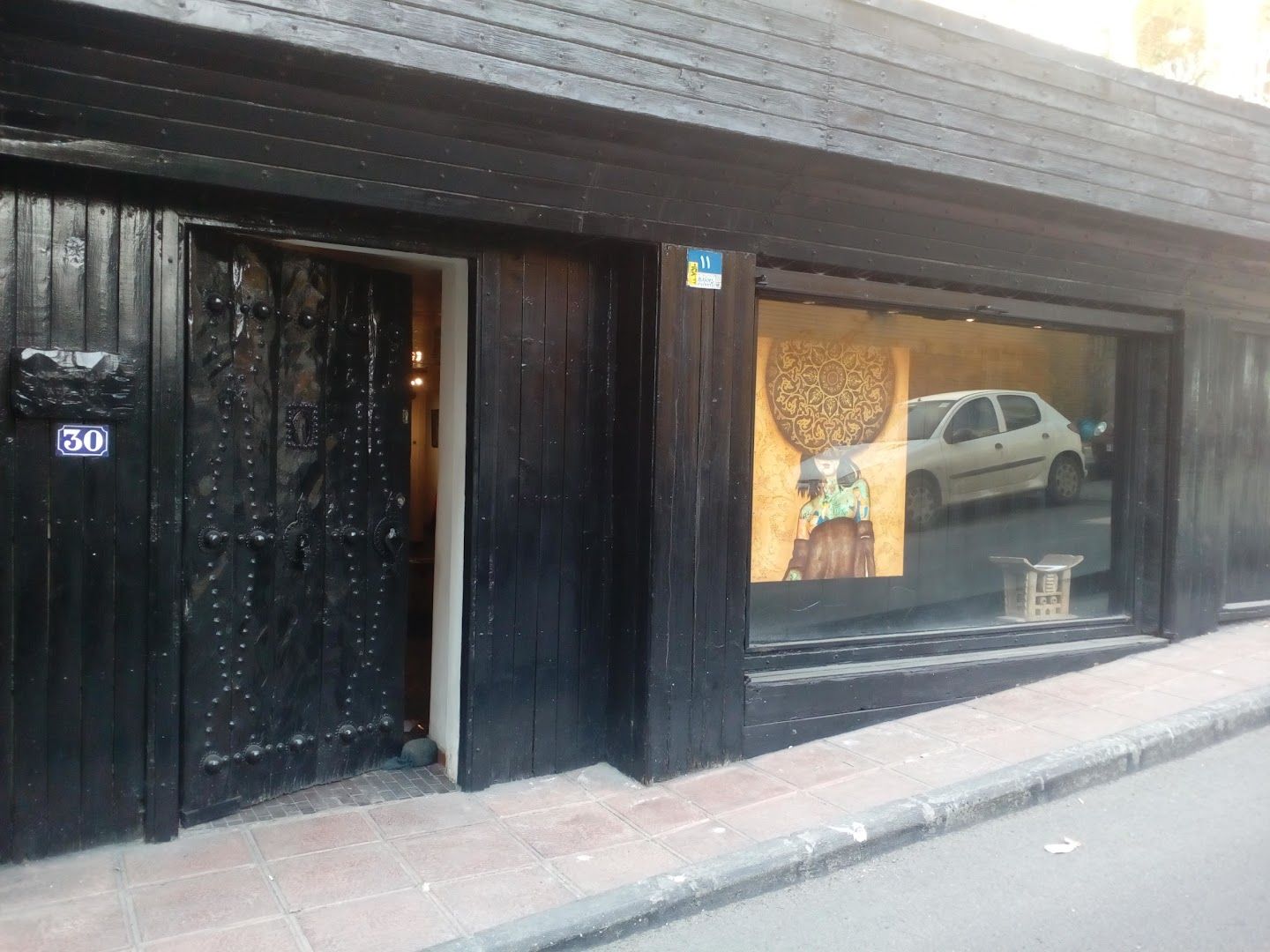
Location: Tehran, Tehran Province, Iran, +98 21 8871 1305
Working Days:
Sunday: 11AM–7PM
Monday: Closed
Tuesday: 11AM–7PM
Wednesday: 11AM–7PM
Thursday: 11AM–7PM
Friday: 4–8PM
Saturday: 11AM–7PM
Phone: +98 21 8871 1305
Website: http://www.seyhounartgallery.com/
Mohsen Gallery
Founded by Ehsan Rasoulof in 2010, the Mohsen Gallery is one of the leading contemporary art galleries in Tehran. The gallery represents a diverse and international group of artists specializing in practices such as painting, sculpture, photography and video. Renovated in 2015, the building houses two exhibition spaces, which over the past six years, have exhibited more than 200 solo and group shows and 140 events.
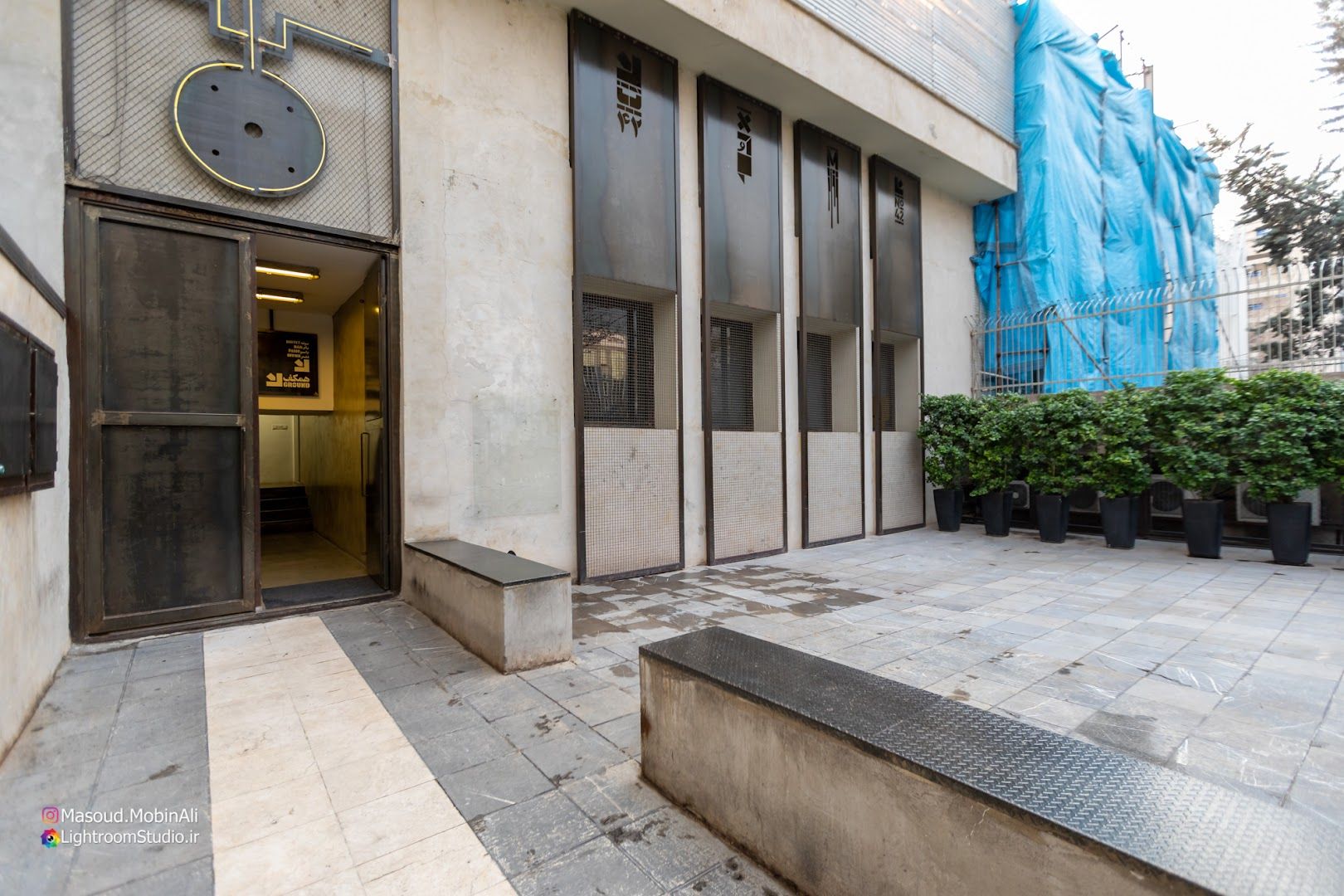
Location: Tehran Province, Tehran, Mina Blvd, No. 42, Iran
Working Days:
Sunday: 4–9PM
Monday: 4–9PM
Tuesday: 4–9PM
Wednesday: 4–9PM
Thursday: Closed
Friday: 4–9PM
Saturday: 4–9PM
Phone: +98 21 2225 5354
Website: http://www.mohsen.gallery/
Assar Art Gallery
Established in 1999, Assar Art Gallery hosts a large collection of modern and contemporary Iranian art and plays a crucial role in the Tehran art scene. As one of Tehran’s leading galleries, Assar regularly represents some of Iran’s most notable emerging artists. The gallery is also known for its presence at international art fairs, promoting contemporary Iranian art and showcasing selected works to a wider audience.
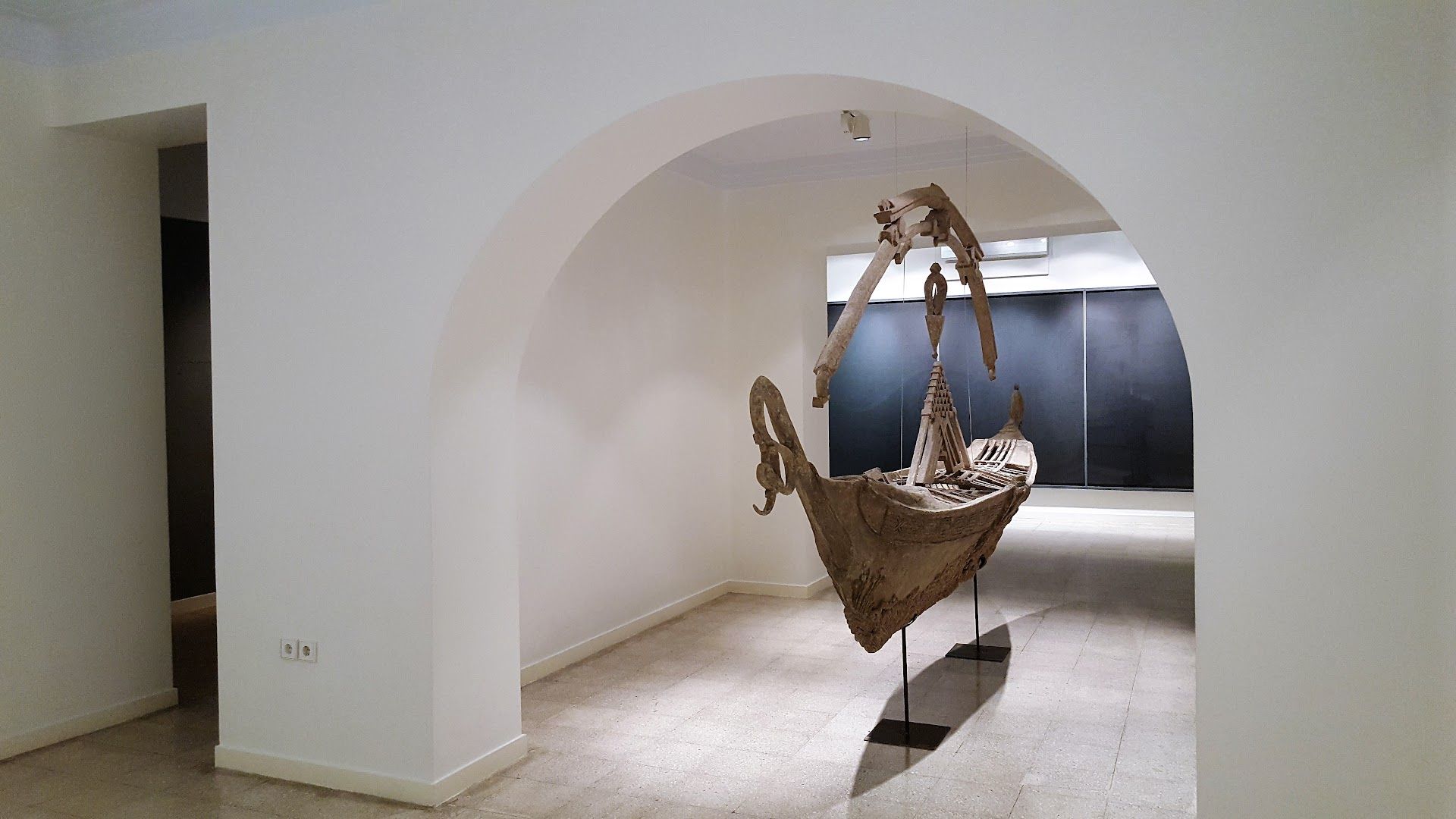
Location: Tehran Province, Tehran, Barforooshan St, No. 16, Iran
Working Days:
Sunday: 11AM–8PM
Monday: 11AM–8PMTuesday: 11AM–8PM
Wednesday: 11AM–8PM
Thursday: 11AM–8PM
Friday: 4–8PM
Saturday: Closed
Phone: +98 21 8832 6689
Website: http://www.assarartgallery.com/
Dastan’s Basement
In addition to supporting young Iranian artistic talents, Dastan’s Basement also regularly hosts documentary film screenings and book launches. It dedicates many efforts to research and education on Iranian visual arts. Also located within walking distance is Dastan+2, a sister gallery that also exhibits work from the country’s emerging artists.
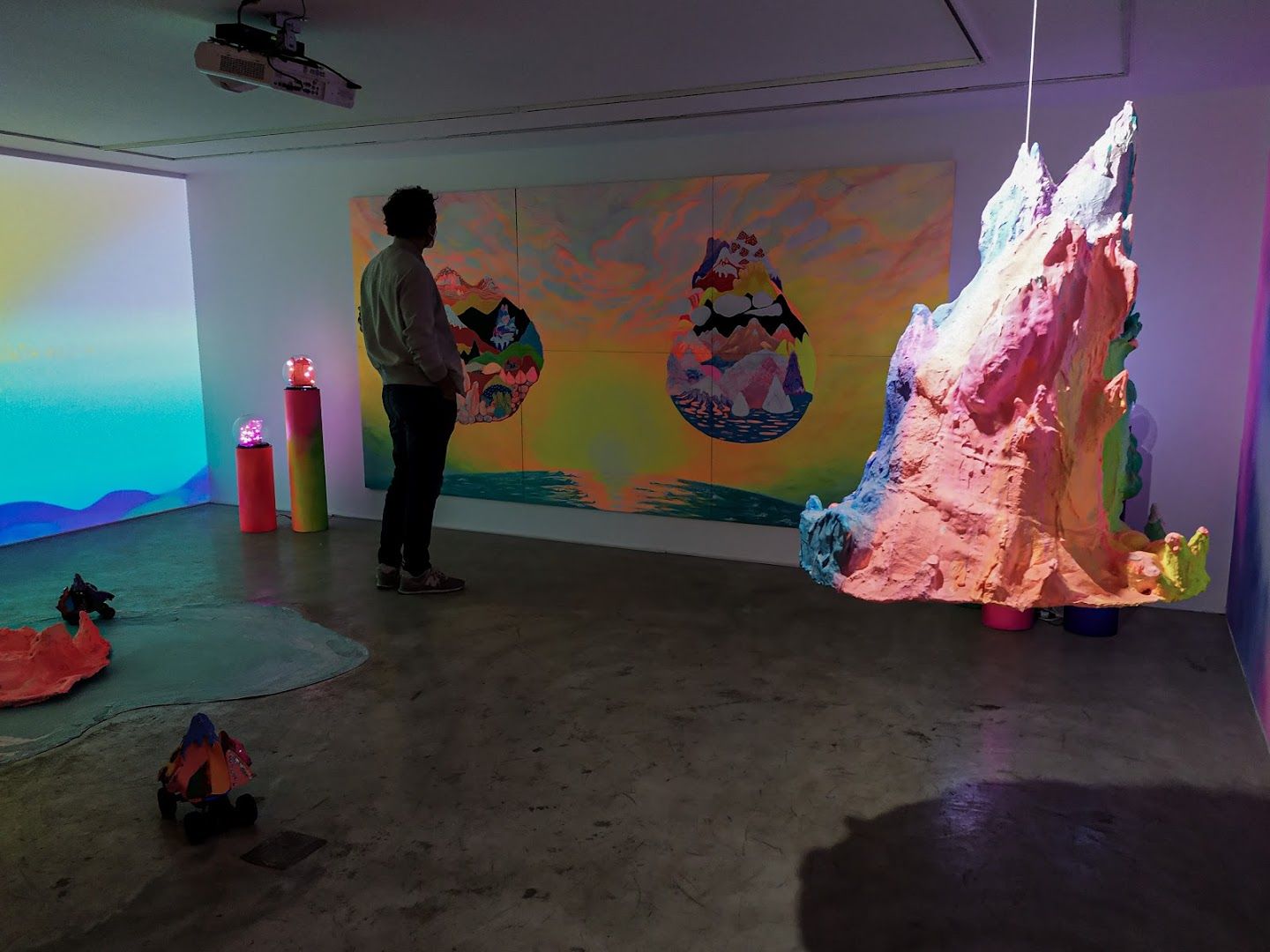
Location: Tehran Province, Tehran, No. 6، Bidar St, Iran
Working Days:
Sunday: Closed
Monday: 11AM–7PM
Tuesday: 11AM–7PM
Wednesday: 11AM–7PM
Thursday: 11AM–7PM
Friday: 12:30–8PM
Saturday: Closed
Phone: +98 21 2202 3114
Website: http://dastan.gallery/
O Gallery
Opened in the fall of 2014, O Gallery is located in central Tehran and has increasingly become one of the most popular and most frequented galleries in Tehran. O Gallery aims to introduce and further establish emerging young Iranian artists and works closely with curators and leading intellectuals in the field to present exhibitions that reflect the culture and attitudes of its artists.
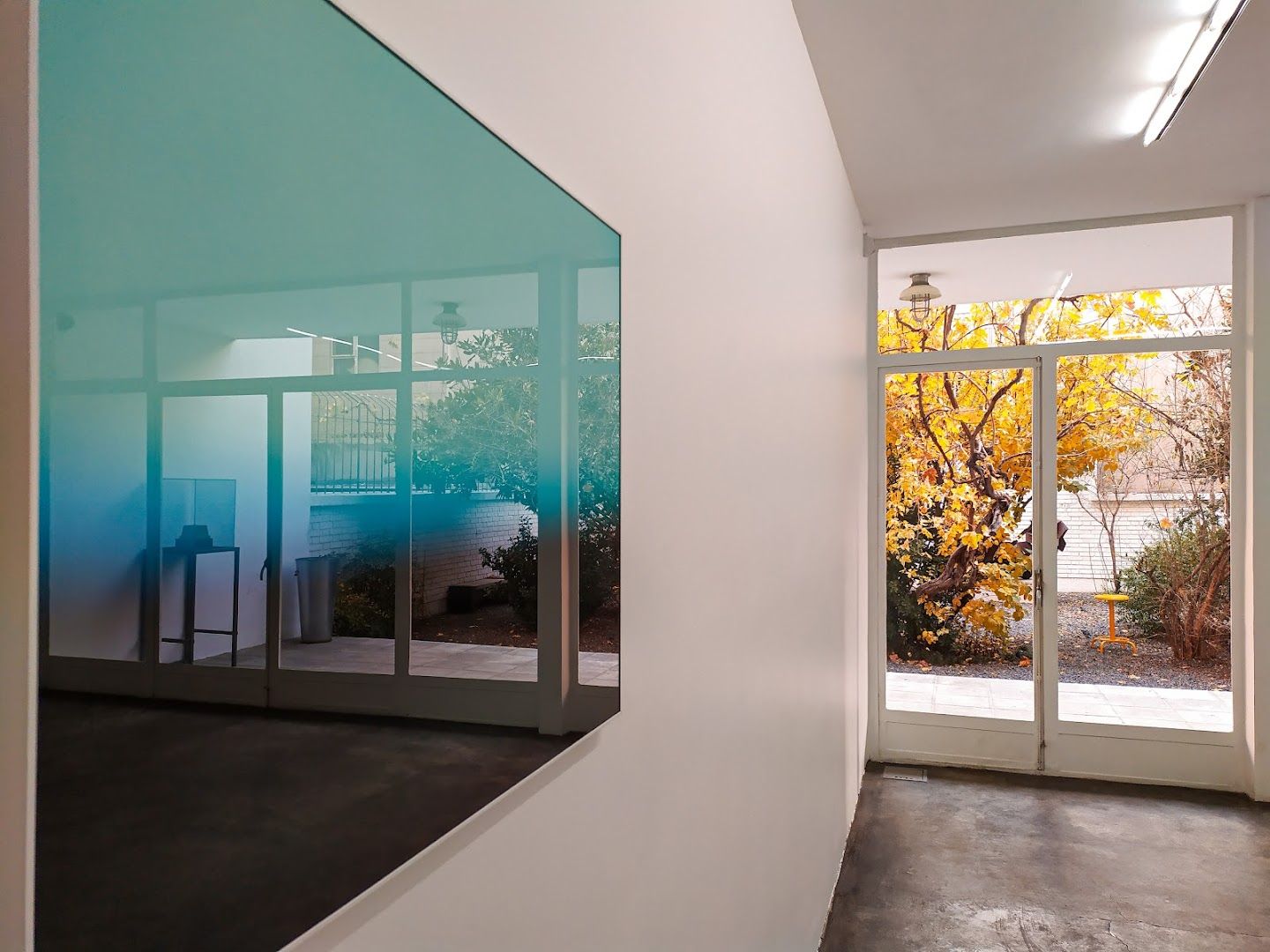
Location: Tehran Province, Tehran, Khedri St, Iran
Working Days:
Sunday: Closed
Monday: 12–8PM
Tuesday: 12–8PM
Wednesday: 12–8PM
Thursday: 12–8PM
Friday: 4–9PM
Saturday: Closed
Phone: +98 21 8832 4828
Website: http://ogallery.net/




